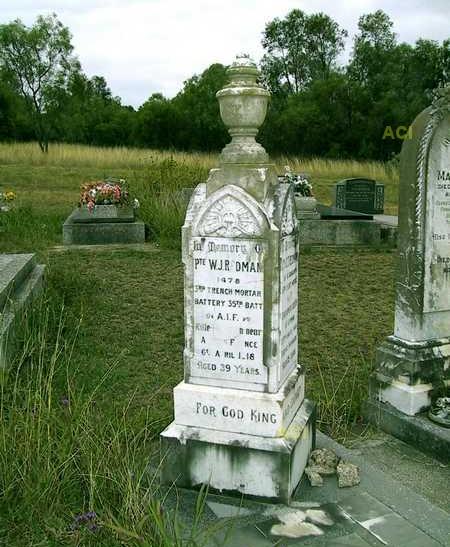
Light Trench Mortar Battery - 35th BATTALION AIF
Private: 1478A Walter John REDMAN
Born: 1878. Patrick's Plains, New South Wales, Australia.
Died: 6th April 1918. Killed in Action. Villers-Bretonneux, France.
Father: William Redman. (1843-1926) died at Jerry's Plain, N.S.W.
Mother: Mary Redman. nee: Lane. (1847-02/01/1904) died at Jerry's Plain, N.S.W.
INFORMATION
Walter John Redman enlisted with the AIF at Quirindi, N.S.W. on the 7th June 1916 and was marched in to the Rutherford Training Depot before en training to Sydney where he embarked on board HMAT A 11 "Ascanius" for England where he disembarked at Devonport on the 28th December 1916. Walter was marched in the 9th Training Depot at Larkhill were he settled down to General Camp Routine and proceeded overseas for France on the 20th March 1917 and was Taken on in Strength with the 35th Battalion on the 9th April 1917.
7th June 1917.
THE BATTLE OF MESSINES
The 3rd Australian Divisions first major offensive was at Messines Ridge on the 7th June 1917. The Australian 3rd Division was a part of the II Anzac Corps which was allotted to the first assault. The 25th New Zealand, 3rd Australian Division with the 4th Australian Division in reserve. The 4th Division were battle hardened troops who had fought many major battles.The 3rd Australian Division were having problems getting to the "jump off" point. The day before the 9th and 10th Infantry Brigades were bombarded by German Gas-Shells around Hill 63 and Ploegsteert Wood. Many of the Aussies were not wearing gas masks, but despite this they pressed on even though they received 500 casualties.
They made it to the "jump off" point but only just with some of the men from the 9th and 10th going straight over the top without stopping. The mines went up and the attack commenced behind a protective barrage. The II Anzac Corps were attacking on the right with their objective being the southern shoulder of the ridge which included Messines, the Dover and St Yves areas as far south to the east of Ploegsteert Wood.
Major General Sir John MONASH's 3rd Division had to contend with a tricky 3 mile approach out of Ploegsteert Wood and after the German gas attack, but they were not deterred. The 9th Infantry Brigade under Brigadier General: Alexander JOBSON and the 10th Infantry Brigade under Brigadier General W R NICHOLL had just made the jumping off point but some of the men did not stop, going straight into the assault from the approach march.
Their objective lay between St Yves and the Douve. The mines at Trench 127 and Trench 12 at Factory Farm were laid to aid this task. The explosions erupted a few seconds before zero hour and created craters of 200 feet in diameter, completely obliterating the German defense line as the 9th and 10th Infantry Brigades went over the top. The mine crates forced the 9th and 10th Brigades to veer to the left and right which caused some confusion with the main assault. It is testimony to the quality of training that every man knew the ground, tasks and objectives so well.
Private: 1804 John CARROLL 33rd Battalion, rushed the enemy's trench and bayoneted four of the German occupants. He then noticed a comrade in difficulties and went to his assistance, killing another German. He then attacked single handed a German Machine Gun Team, killing all three of them and capturing the gun. He later rescued two of his comrades who had been buried alive by German Shell Fire, and in spite of heavy shelling and machine gun fire he dug them out alive and saved them from certain death. John was awarded the Victoria Cross.
The German forward zone was completely engulfed and taken by the main assault. The two supporting battalions of each brigade then passed the leading battalion to continue the advance. The men were constantly re-supplied and the ridge was taken. There were many German prisoners taken during the offensive. The 3rd Division was well ahead with the 9th Infantry Brigade pushing on beyond Grey Farm, and on the right the 10th Infantry Brigade were veering left towards Septieme Barn north of Douve.
The German resistance was heavy but was generally brushed aside by tanks and artillery before the infantry had to become too involved.The 4th Bavarian Divisions Artillery had made little impact, but as the day wore on the 3rd Division and later the 4th Australian Division received many casualties from German artillery. (70% of all casualties during WW1 were from artillery).
By 9:00am nearly 6 hours after the assault began the Germans were in dissaray, but there was a major problem as the Australians received less casualties as anticipated and when ordered to dig into the ridge they had so many men, that some could not find shelter. the 35th battalion were dug in around Seaforth Farm.
The second phase of the operation was to take the Oosttaverne Line. The 3rd Australian Division would now be in reserve with the 4th Division attacking. The 9th Infantry Brigade (33-34-35-36Bn) were near Thatched Cottage facing Warneton. The river Lys was to their right and the Ploegsteert Wood was now behind them.
Once their objectives were taken the troops consolidated. A barrage to stop and counter attack was shortened and caught three battalions which had to retire. By 9:00 pm this part of the Oosttaverne Line was abandoned. At 10:45 pm General: Alexander John GODLEY ordered the 3rd and 4th Divisions to retake it. This they did by the early hours of the 8th of June.
The Battle for Messines Ridge during May-June 1917 saw 35 officers and 1,631 other ranks loose their lives.
9th Infantry Brigade Casualties.
| 33rd Battalion. AIF | 8 Officers | 382 Other ranks |
| 34th Battalion. AIF | 10 Officers | 378 Other ranks |
| 35th Battalion. AIF | 5 Officers | 431 Other ranks |
| 36th Battalion. AIF | 9 Officers | 421 Other ranks |
| 9th Machine Gun Company. AIF | 2 Officer | 17 Other ranks |
| 9th Light Trench Mortar Battery. | 1 Officer | 2 Other ranks |

FIELD DRESSING STATION, MESSINES 7th June 1917.
Walter was Wounded in Action on the 7th June 1917 and was treated by the 9th Australian Field Ambulance before being evacuated to the Field Dressing Station at Messines for further treatment. Walter was transferred to Hospital and after a short stay was discharged to the 3rd Division Convalescent Depot before rejoining his unit on the 7th of July.
23rd July 1917.
Relieved by 33rd Bn AIF and 35th move back to Close Support position. Casualties during tour in front line 45 including 12 killed. 2nd Lieut: Thomas Laurence GRAY was wounded 25/07/17.
26th July 1917. MESSINES.
Relieved 33rd BN in front line, Captain: Hugh John CONNELL was buried by a shell in the front line 28/07/17 and evacuated. On night of 28/07/17 enemy placed a heavy barrage on the 35th Bn front line (Douve River to Steicnvast Farm) and finally attempted to raid our Right Company "A Coy" on the River Douve. They were successfully repulsed with considerable loss to themselves. Our counter barrage, both Machine-Gun and Artillery being excellent. Captain: Henry Charles Dight CADELL was in command of A Coy. Our trenches were badly damaged but no entrance was affected, our men though very tired and worn fought splendidly.
35th Bn AIF was relieved by 41st Bn (Brigade Relief) 35th moved back to Douve River Camp. Casualties during 27-30/07/17, 41 including 13 killed. This month was the most strenuous in the history of the Battalion (not including the big offensive of June) as the new ground in front of Messines was in a very wet and muddy state, and hastily constructed trenches combined with long tours in the line and the natural desire of the enemy to prevent us settling down made conditions very trying for all ranks.
Private: 2915 Frederick James DEARING. 35th Battalion.
1st August 1917.
NEUVE EGLISE Battalion at rest in DOUVE RIVER CAMP after comming fom MESSINES SECTOR. 3/8/17. 7:00am Battalion leaved DOUVE RIVER CAMP and marches via NEUVE EGLISE and STEENWERET to YIEUX BERQUIN AREA. Battalion arrives at billets at 10:30am Battalion Headquarters at Le YERRIER.
(35th Battalion War Diary)
On the 3rd October 1917, Walter was Wounded in Action (2nd occasion) when he received a Severe Gun Shot Wound to his Chest and Back and was evacuated from the front lines and invalided back to England for further treatment where he was admitted to the Napsbury War Hospital in London with severe chest injuries. After surgery and further treatment he was discharged to the No: Command Depot on the 10th December and proceeded overseas for France on the 1st February 1918. Walter was placed into billets before being marched back into the lines and rejoined his unit as they were moving into the Villers-Bretonneux area.
4th-5th April 1918
The First VILLERS-BRETONNEUX
The Strength of the 9th Infantry Brigade was about 2,250 but their casualties during the 2 days of fighting numbered 30 Officers and 635 men either killed in action or missing.
9th Infantry Brigade Casualties.4th-5th April 1918
| 33rd Battalion. AIF | 3 Officers | 82 Other ranks |
| 34th Battalion. AIF | 5 Officers | 120 Other ranks |
| 35th Battalion. AIF | 9 Officers | 282 Other ranks (including 44 missing) |
| 36th Battalion. AIF | 12 Officers | 133 Other ranks (including 1 missing) |
| 9th Machine Gun Company. AIF | 1 Officer | 18 Other ranks (including 4 missing) |
Walter was buried by Corporal: 2600 George HOLLIDAY. 35th Battalion who helped erect the MESSINES MEMORIAL near Ash Crater to the members of the 35th Battalion, who fell in the battle of Messines on the 7th June 1917. His service was given by Chaplain 3rd Class: John Edward Norman OSBORN. M.C. 9th Infantry Brigade attached to the 35th Battalion AIF on the 11th April 1918.
Walter is remembered with honour and is commemorated in perpetuity by the Commonwealth War Graves Commission at the Adelaide Cemetery, Villers-Bretonneux, Picardie, France.

Adelaide Cemetery, Villers-Bretonneux, Picardie, France.
Family Information

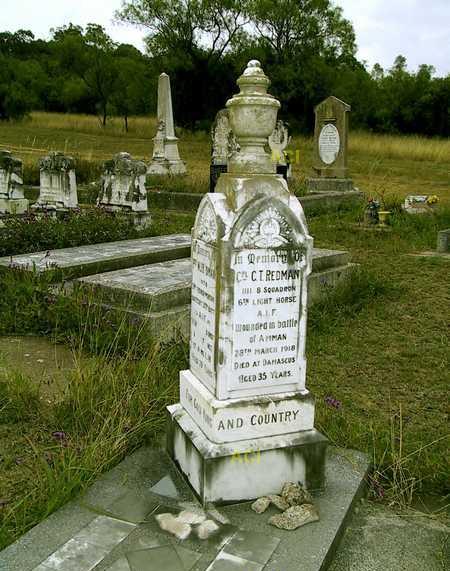
Grave of Walter's Parents William and Mary Redman
(Jerry Plains Cemetery; David Harrower: 2010)
Military Records

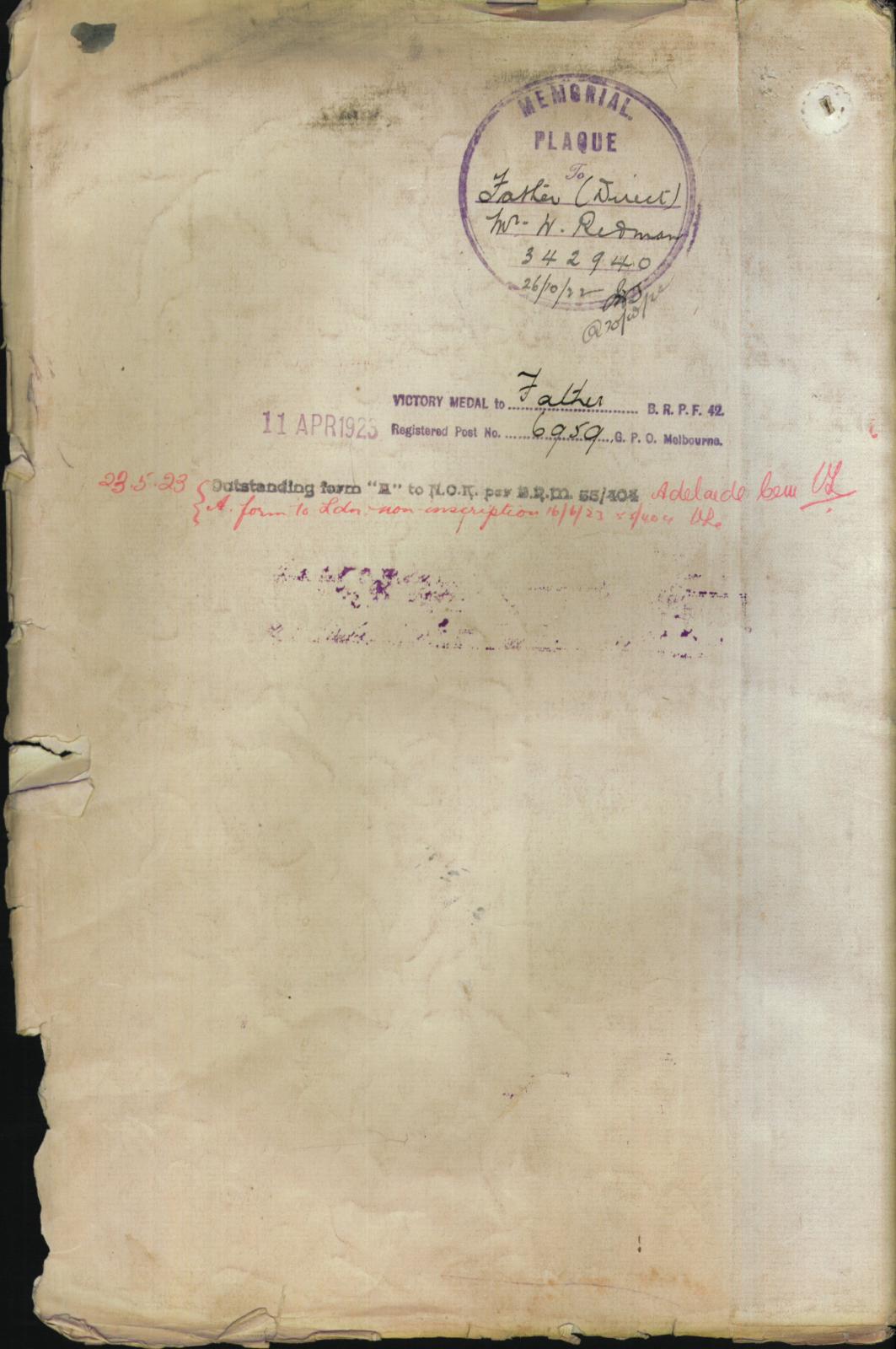
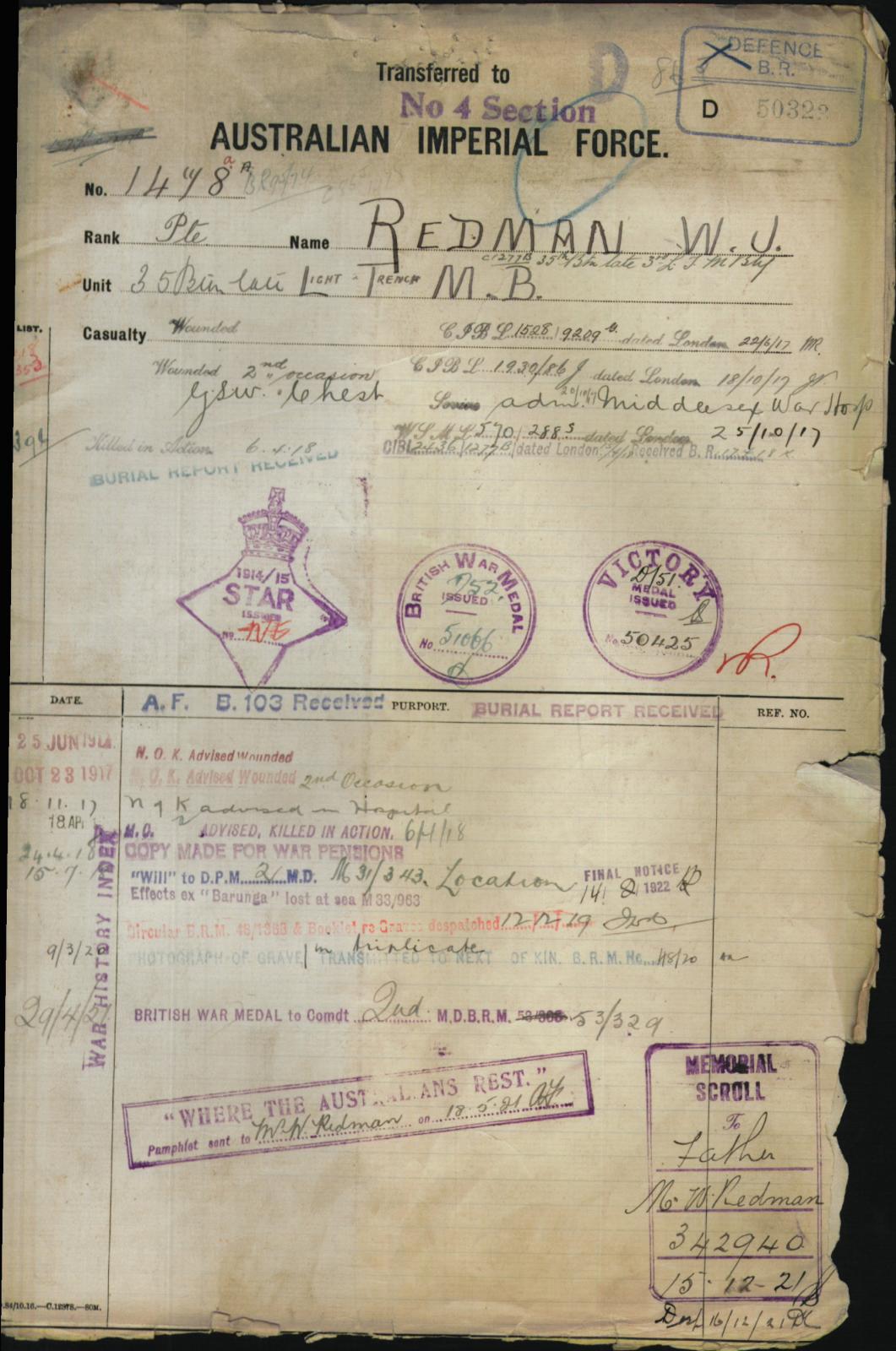


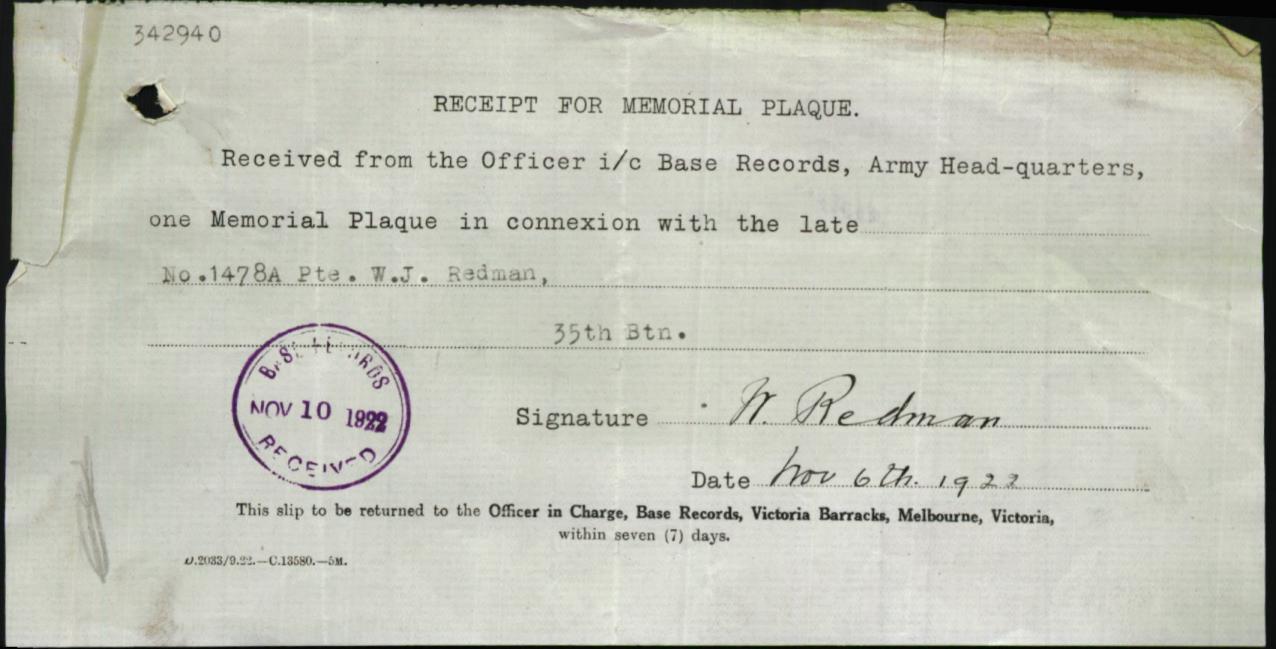
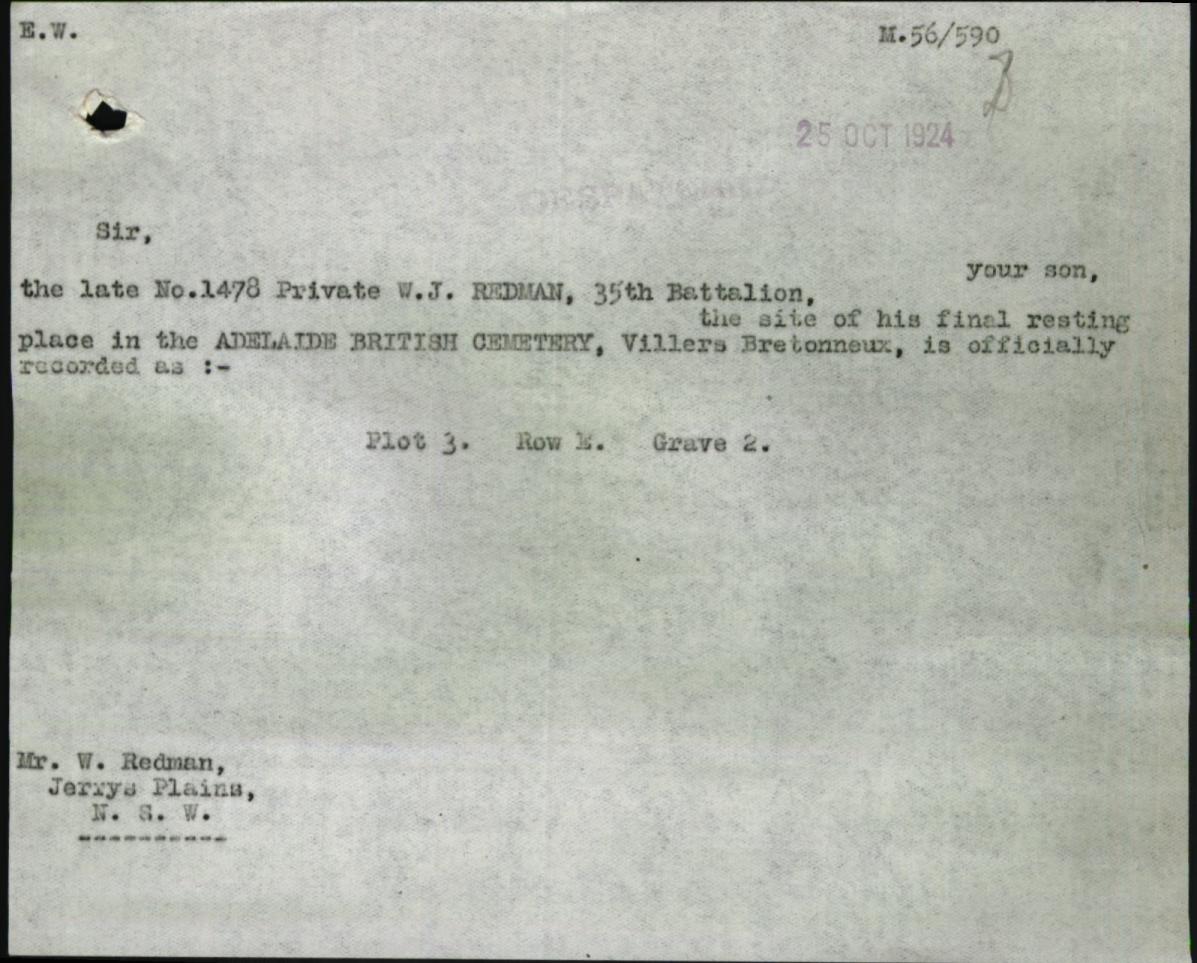
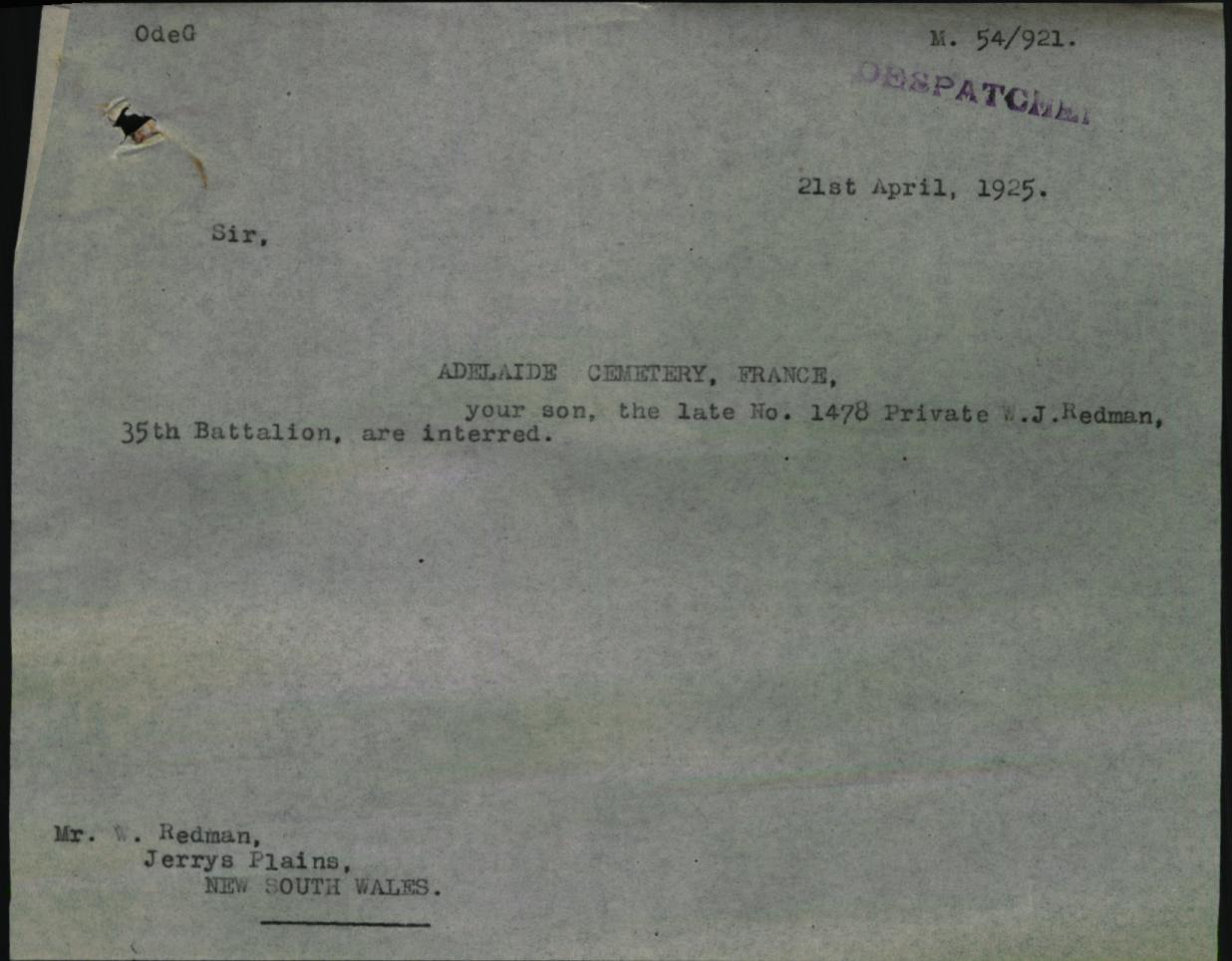
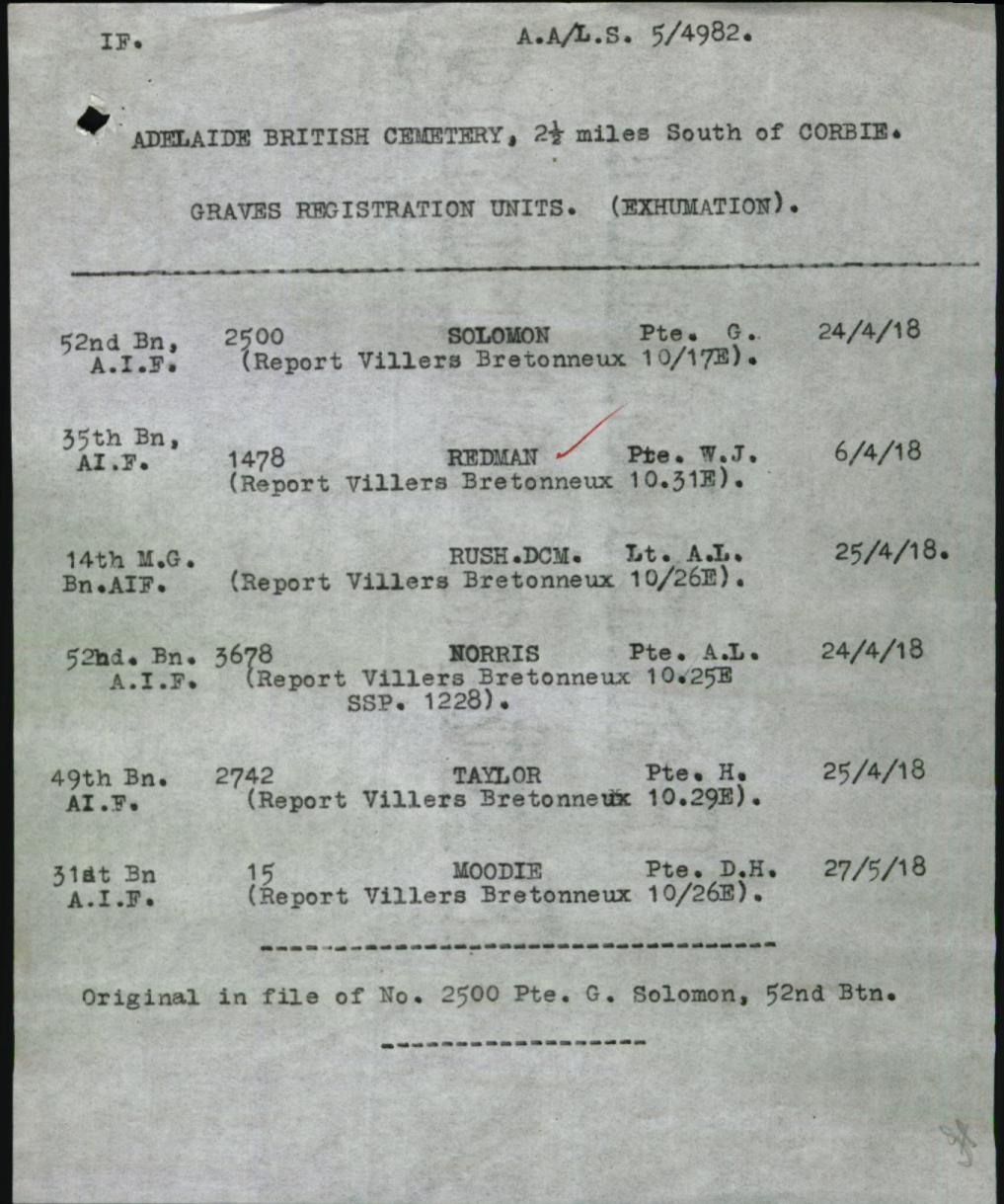
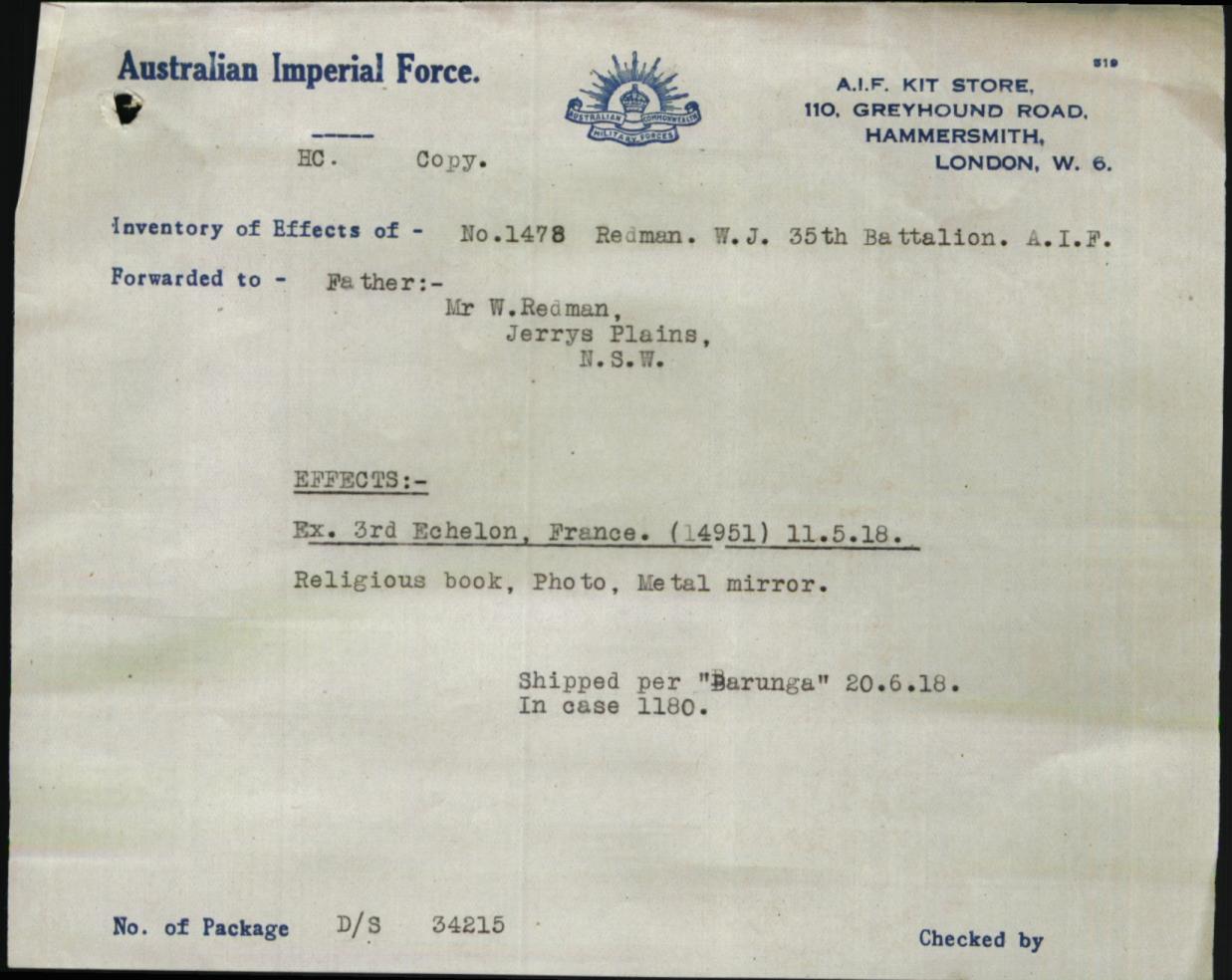
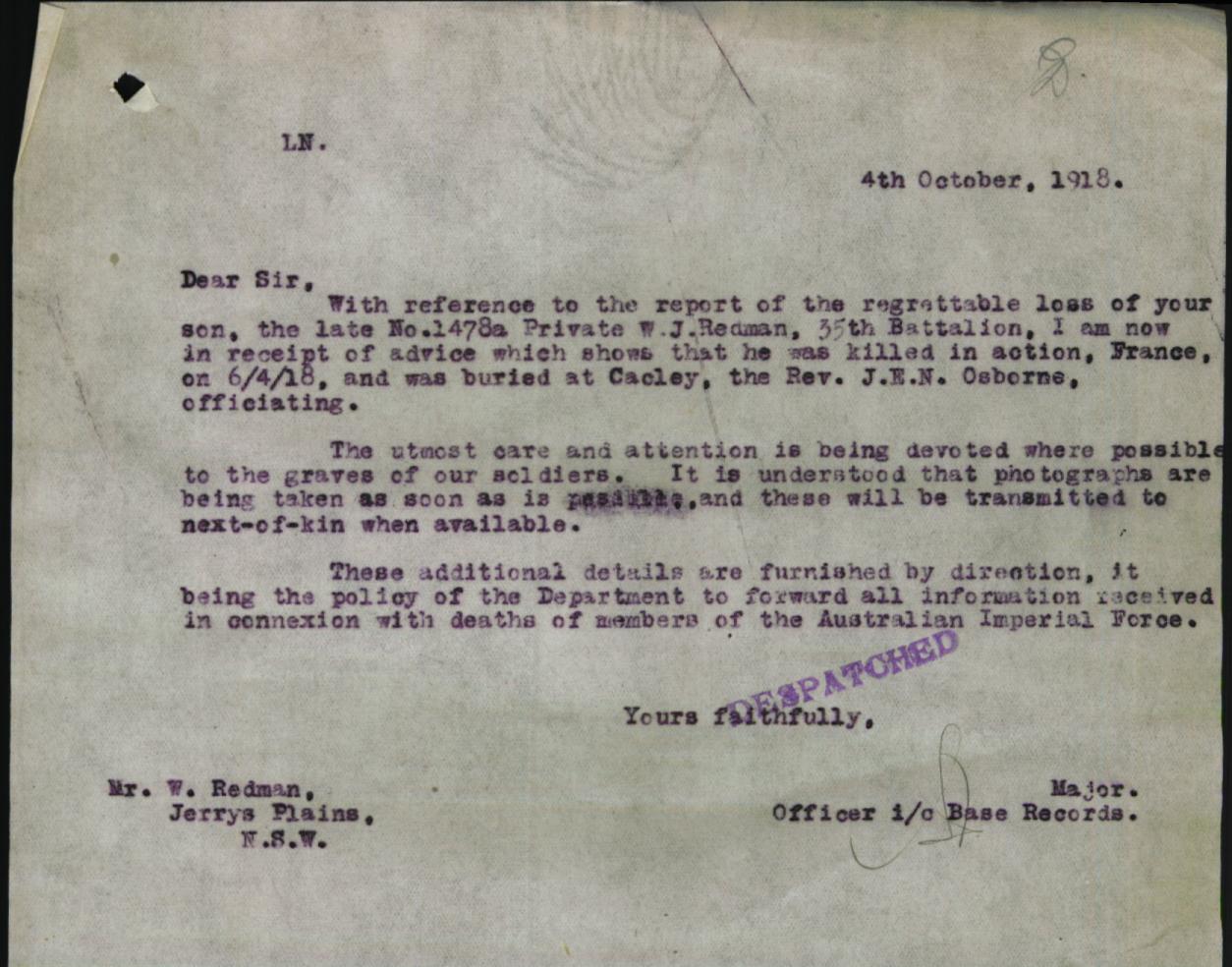

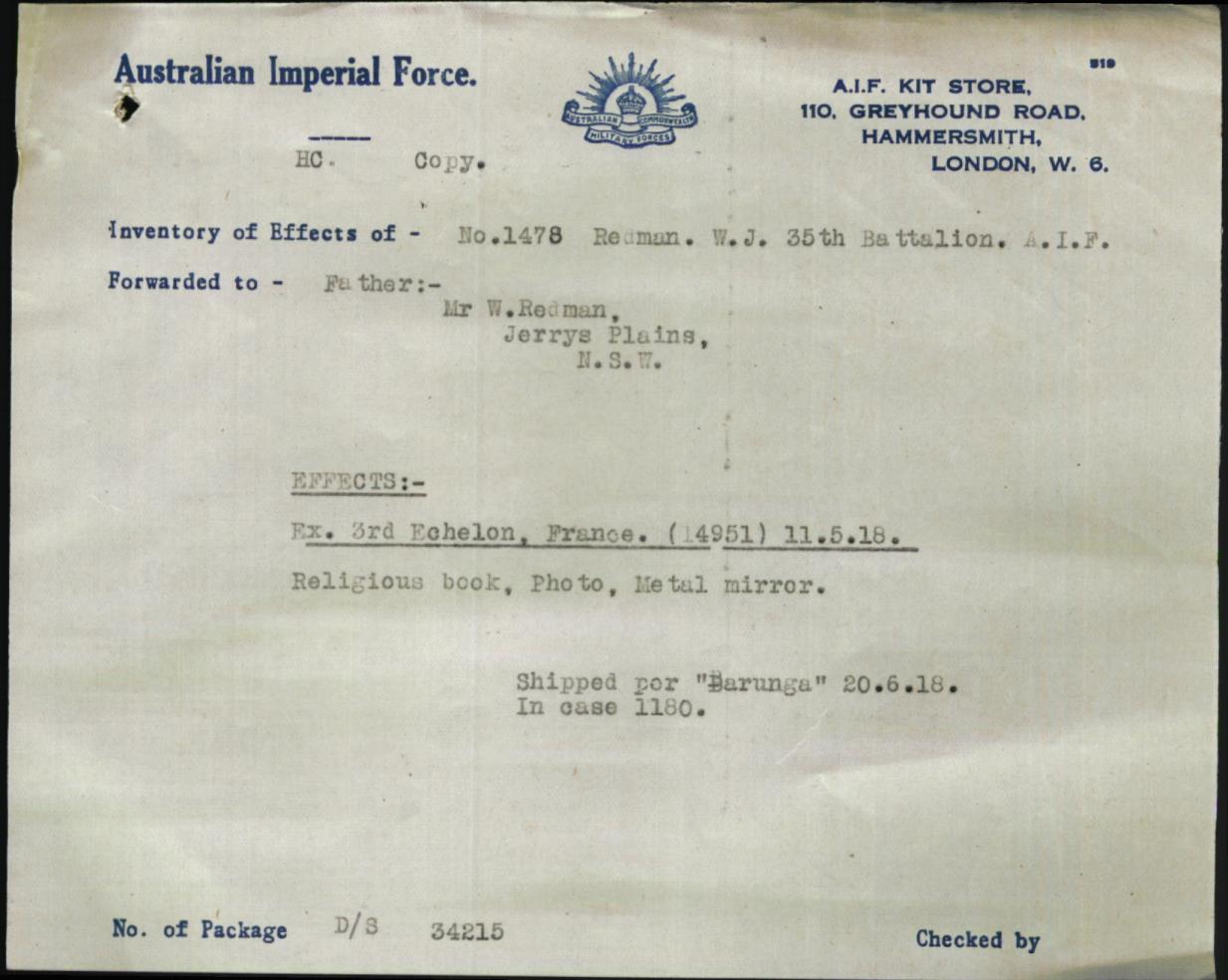
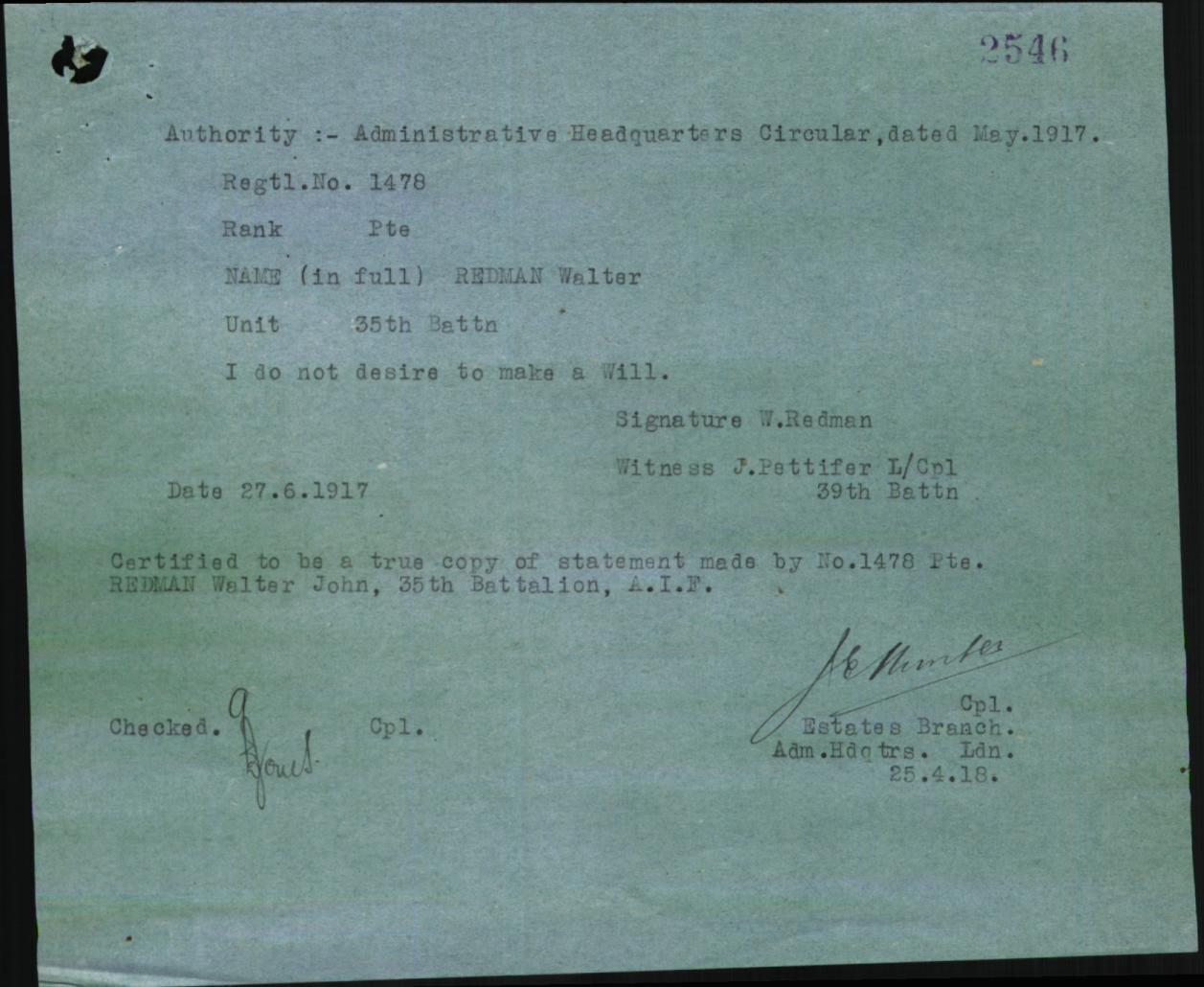
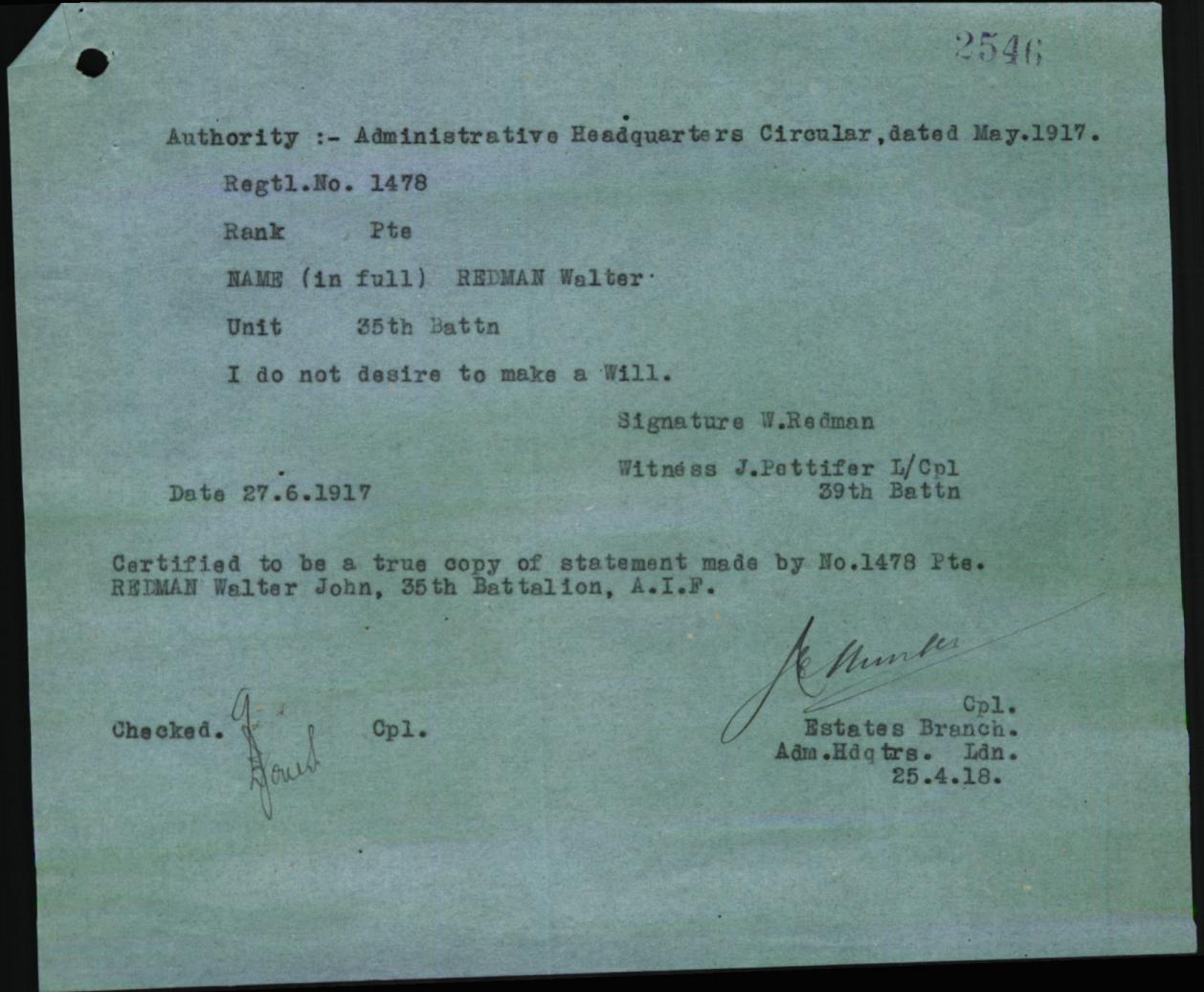
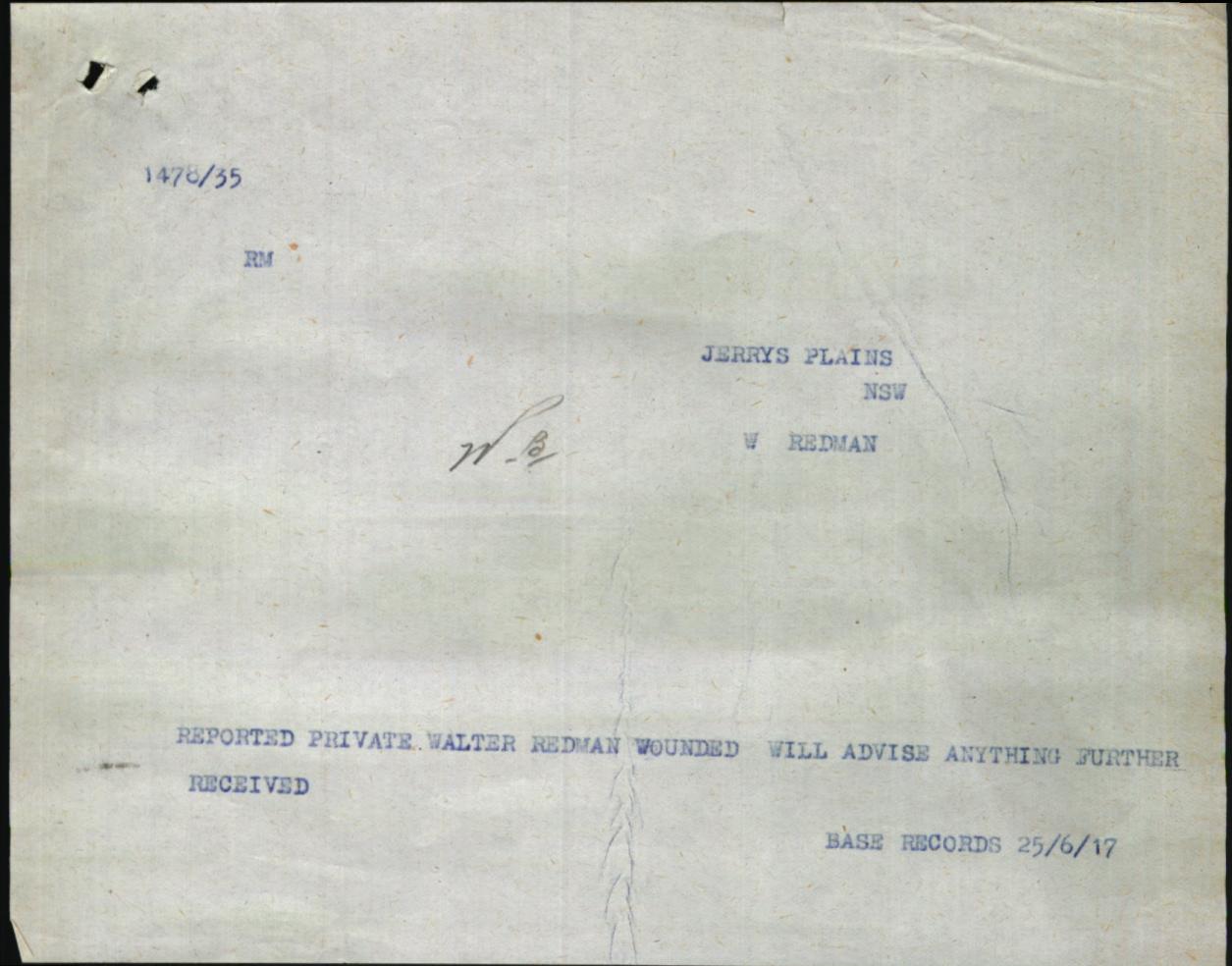
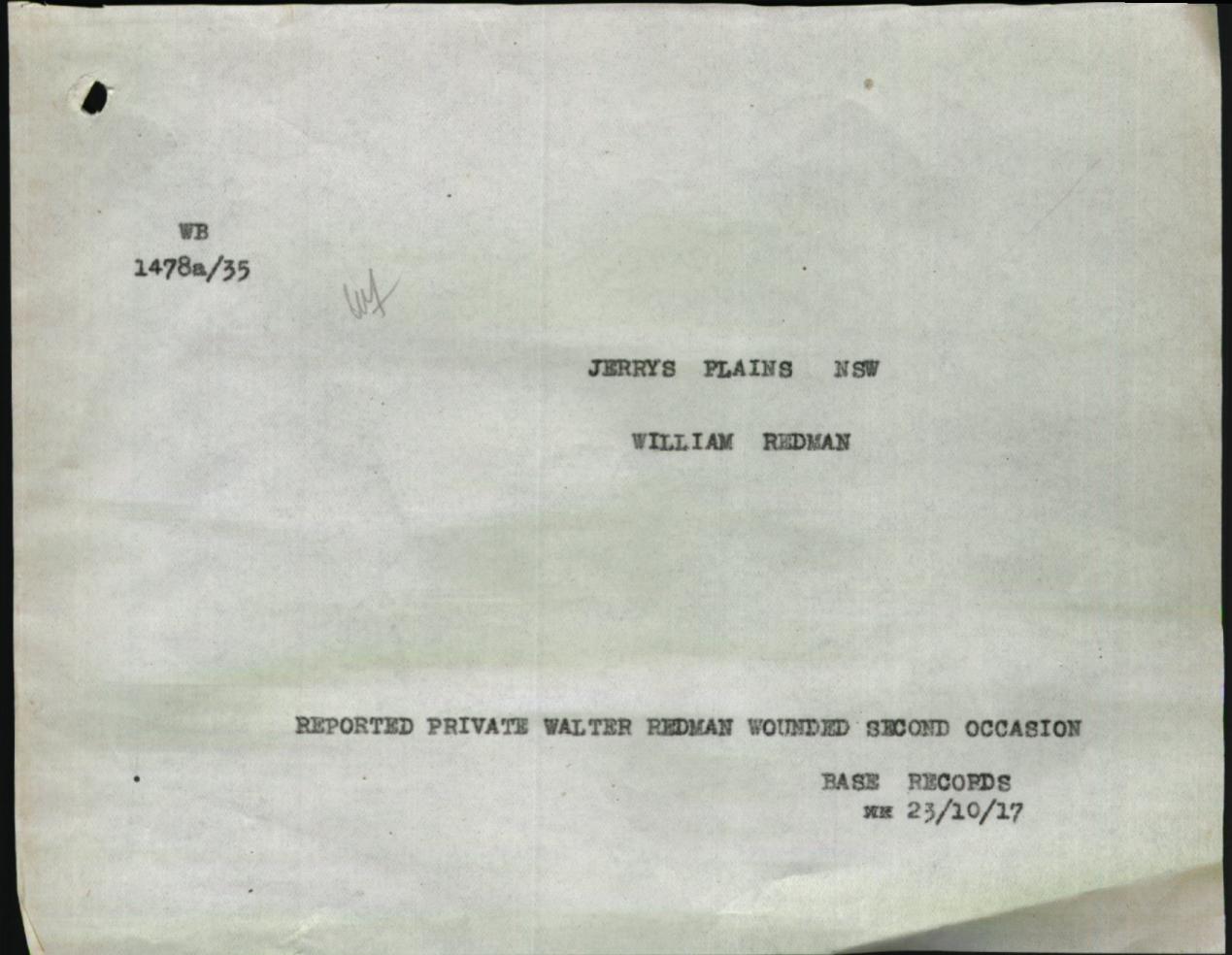
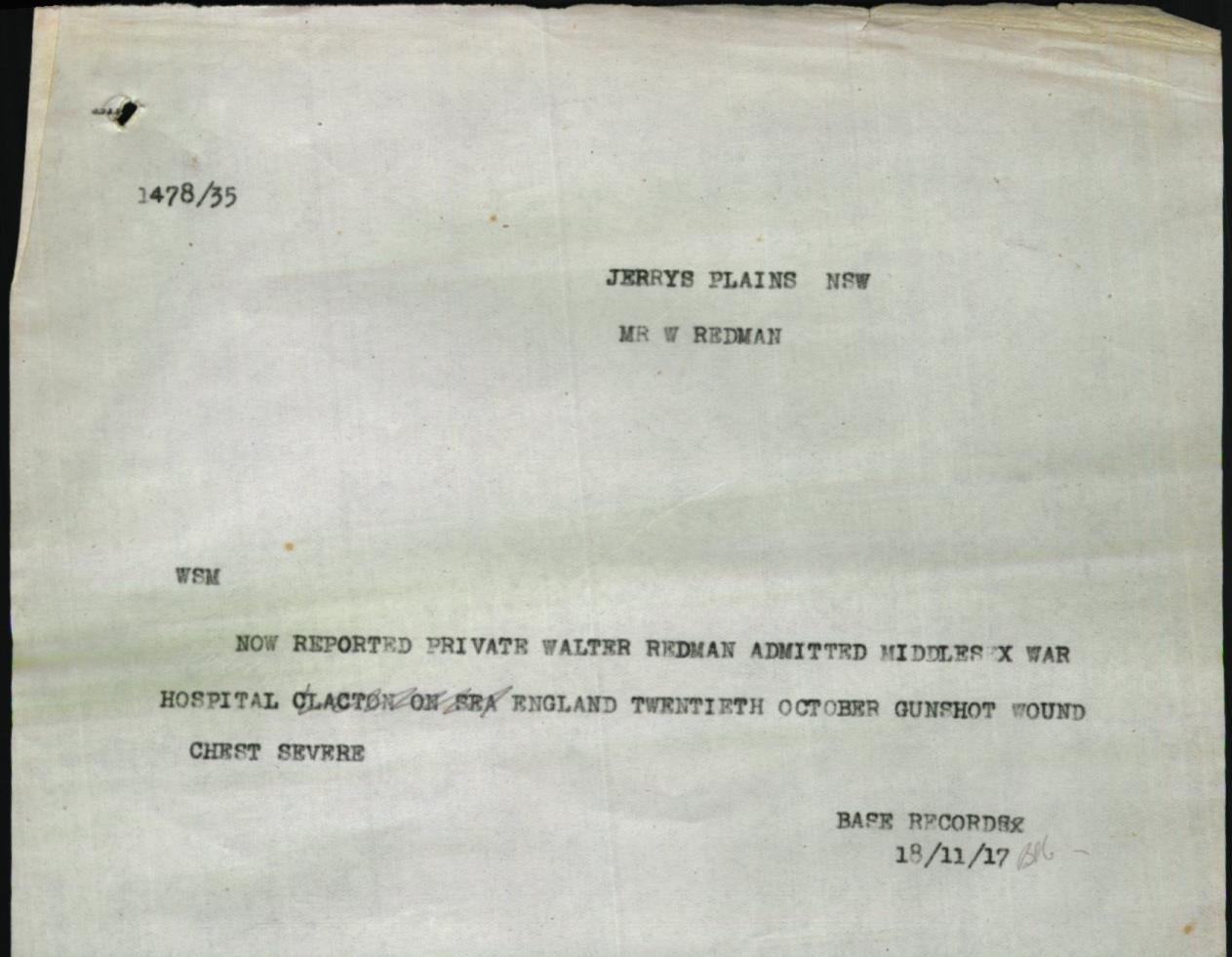
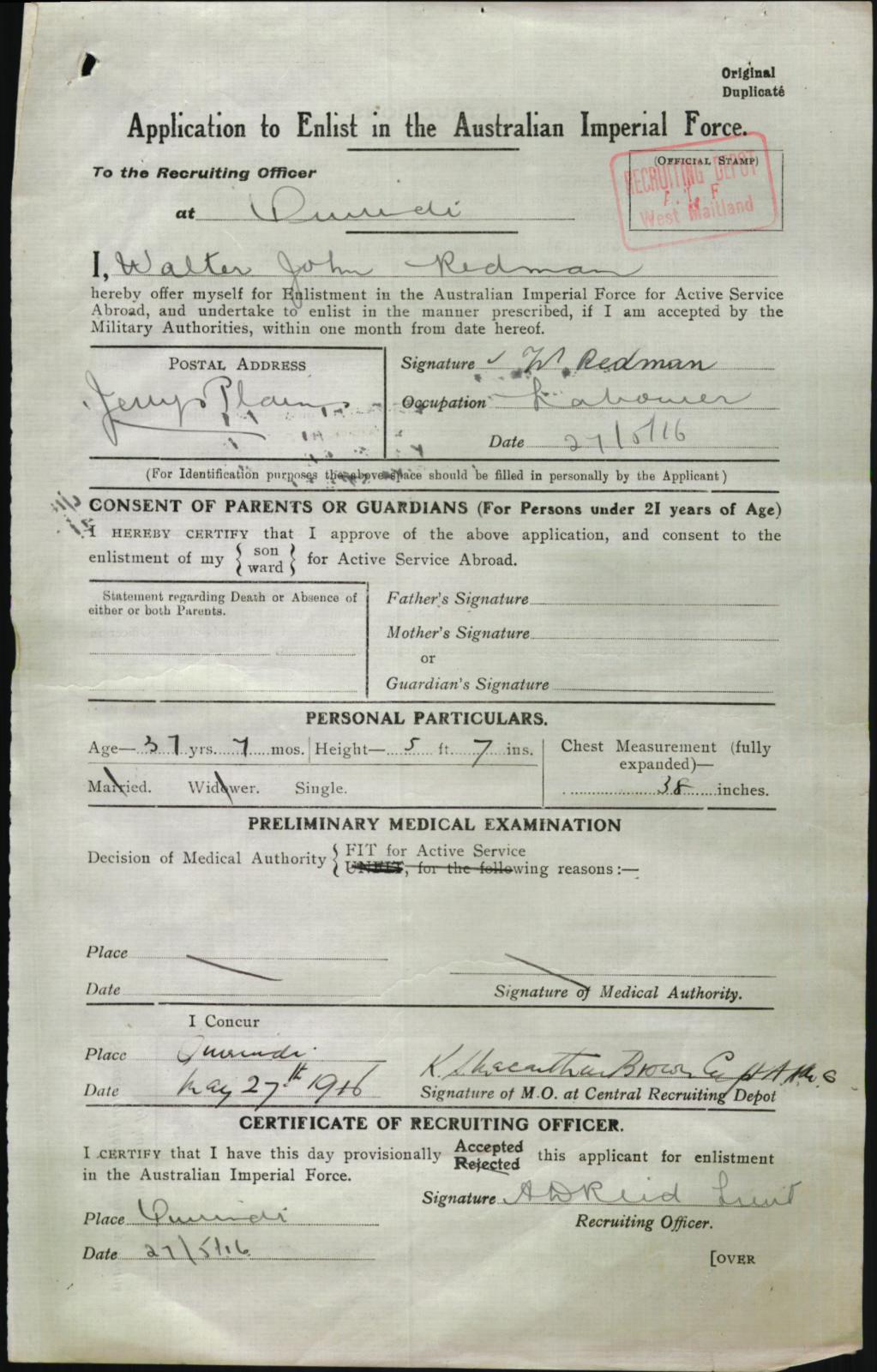
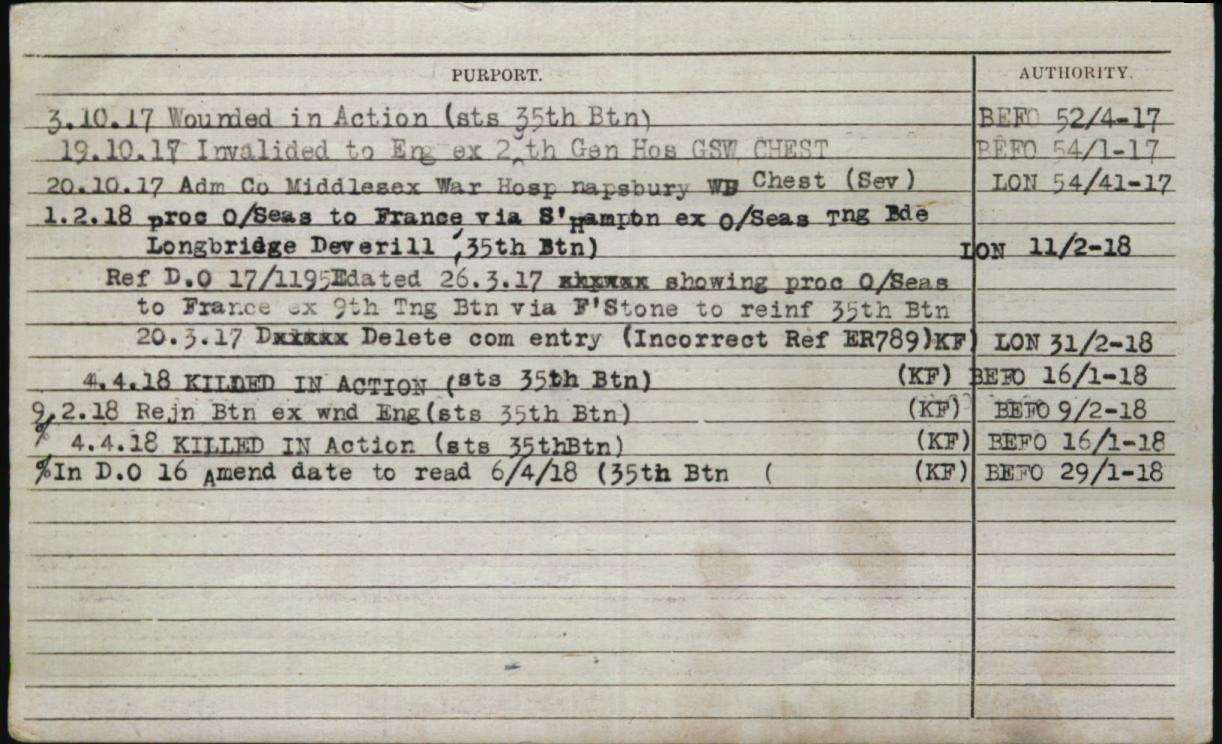
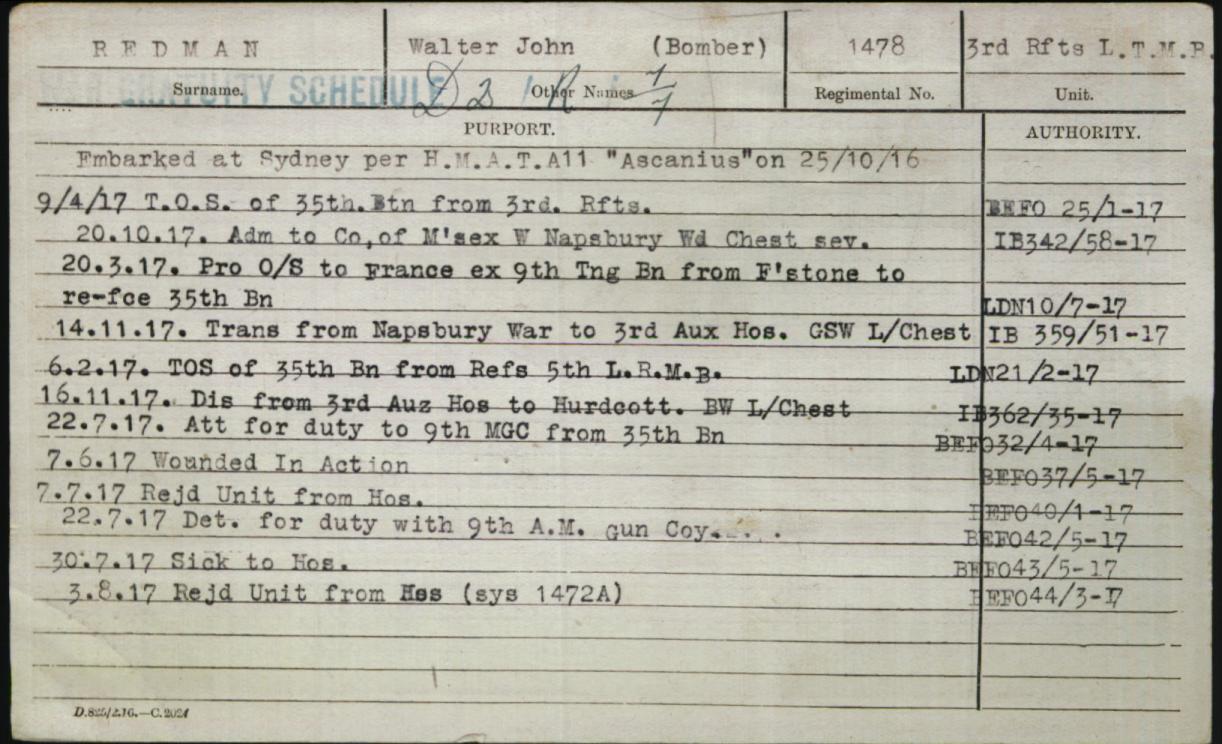
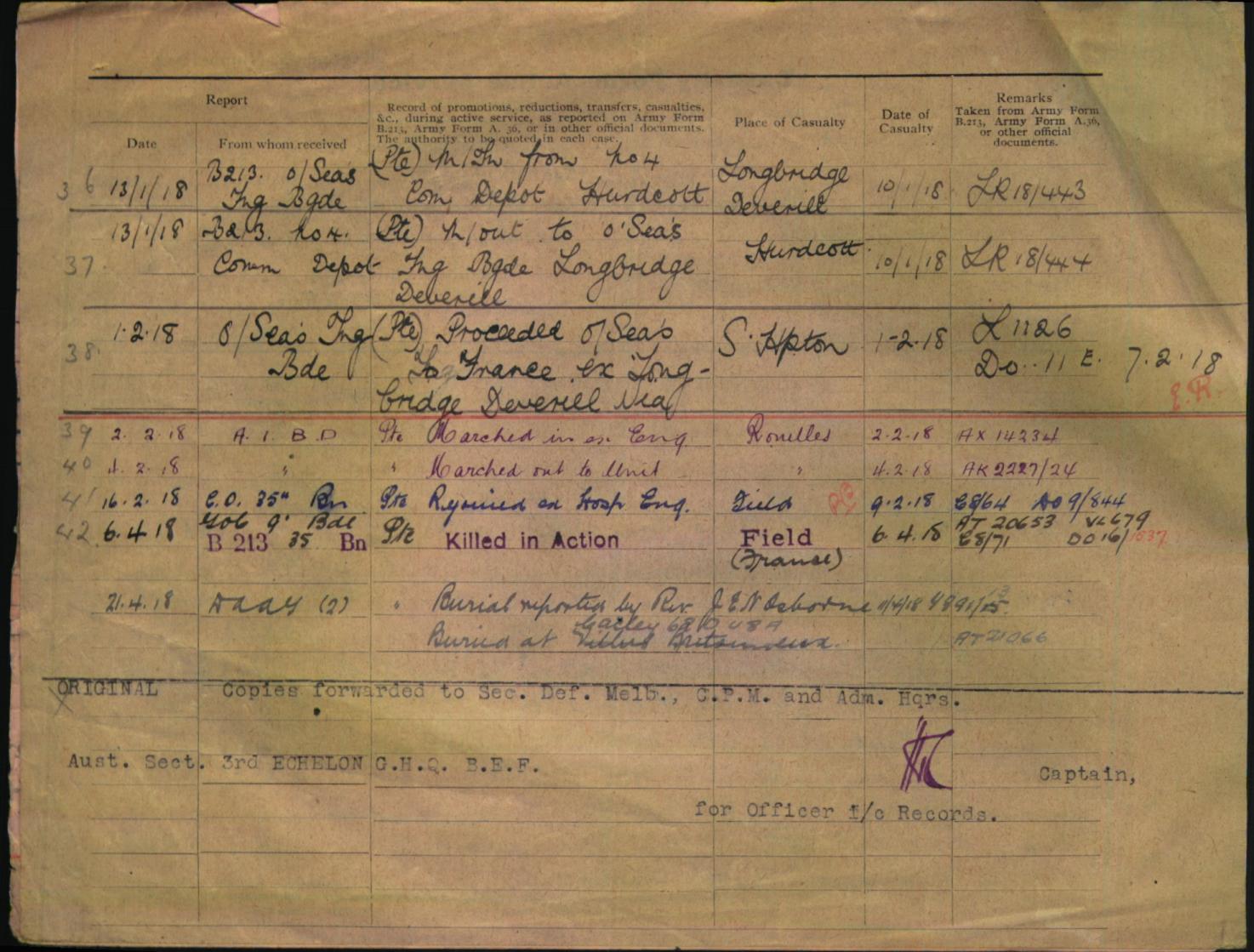
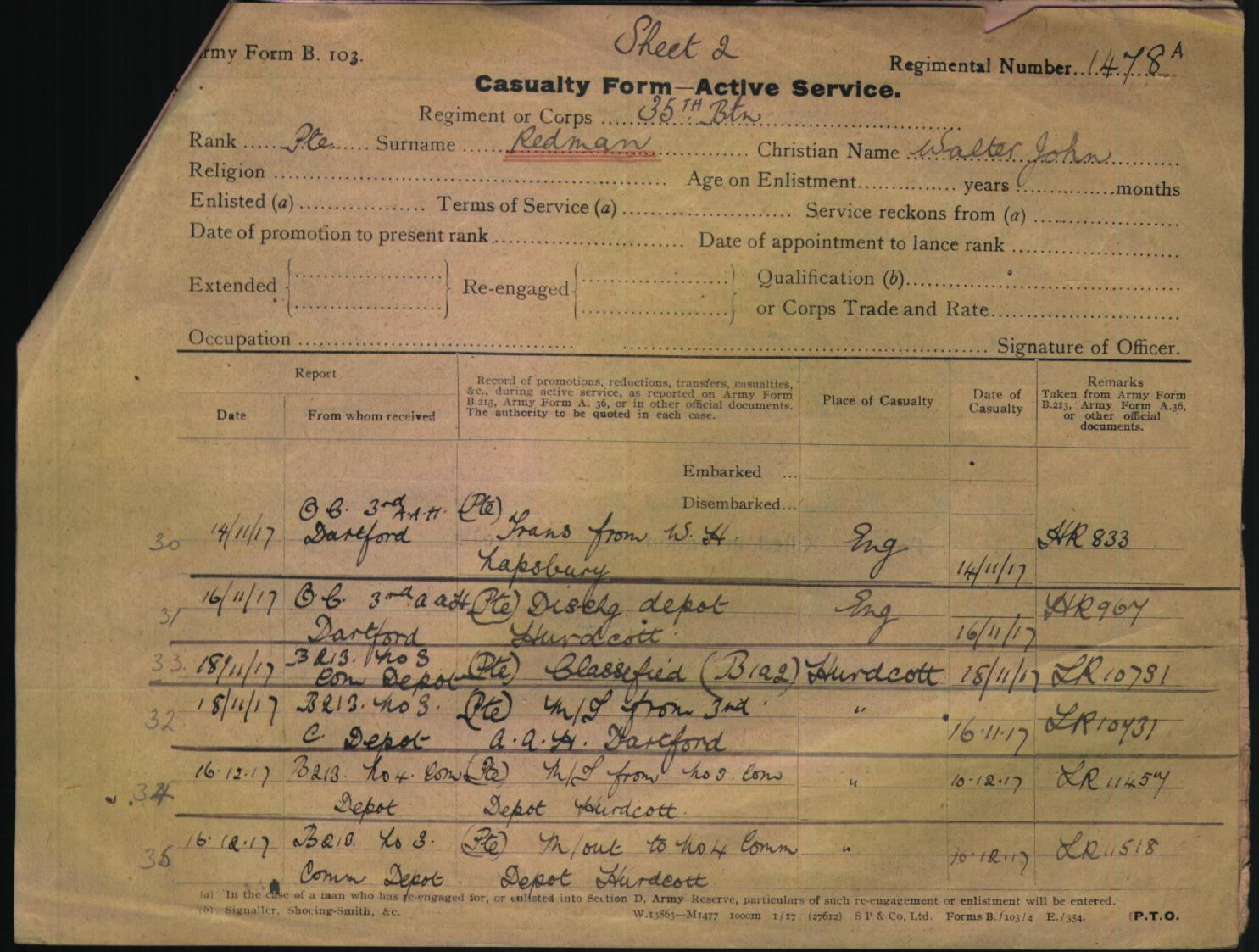
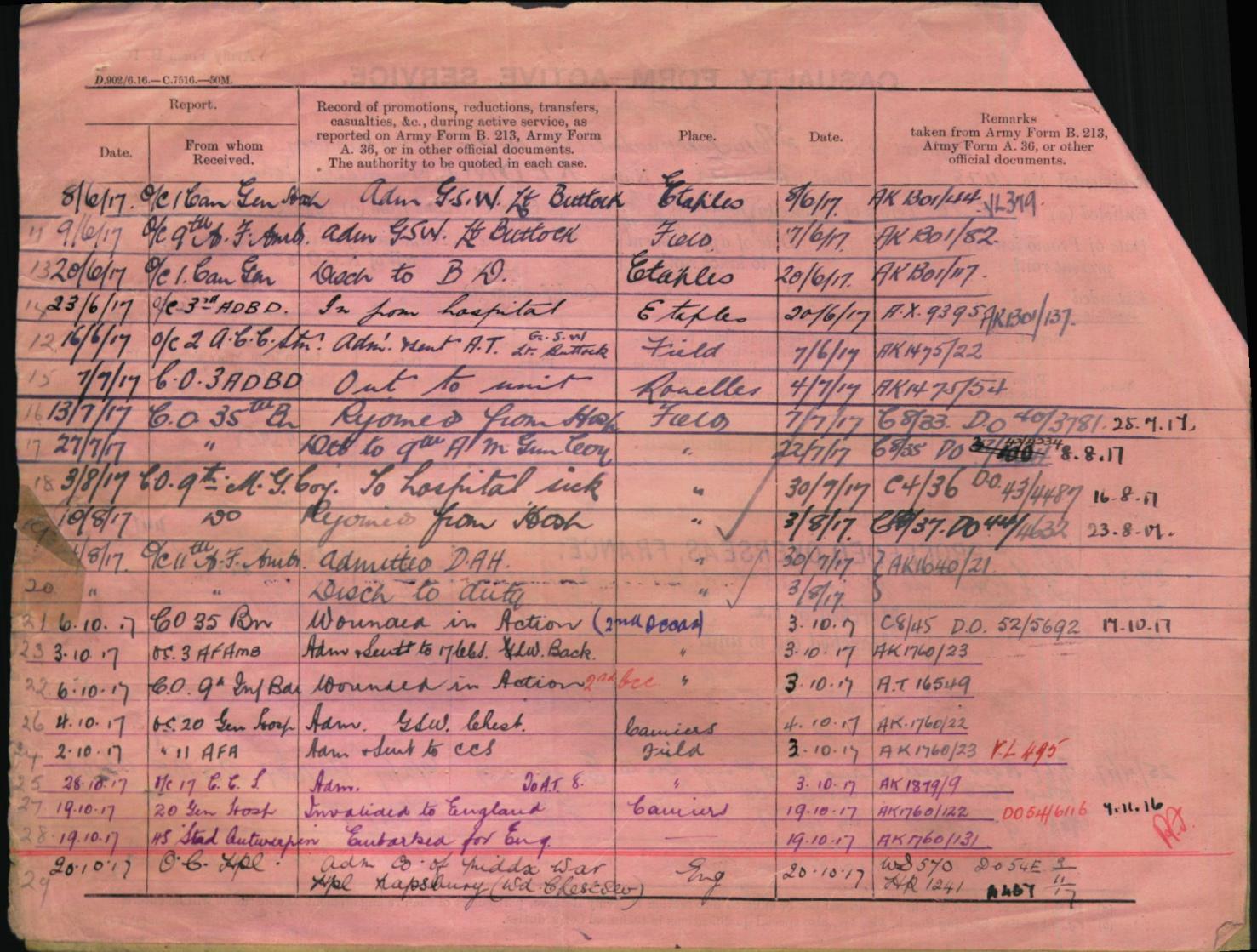
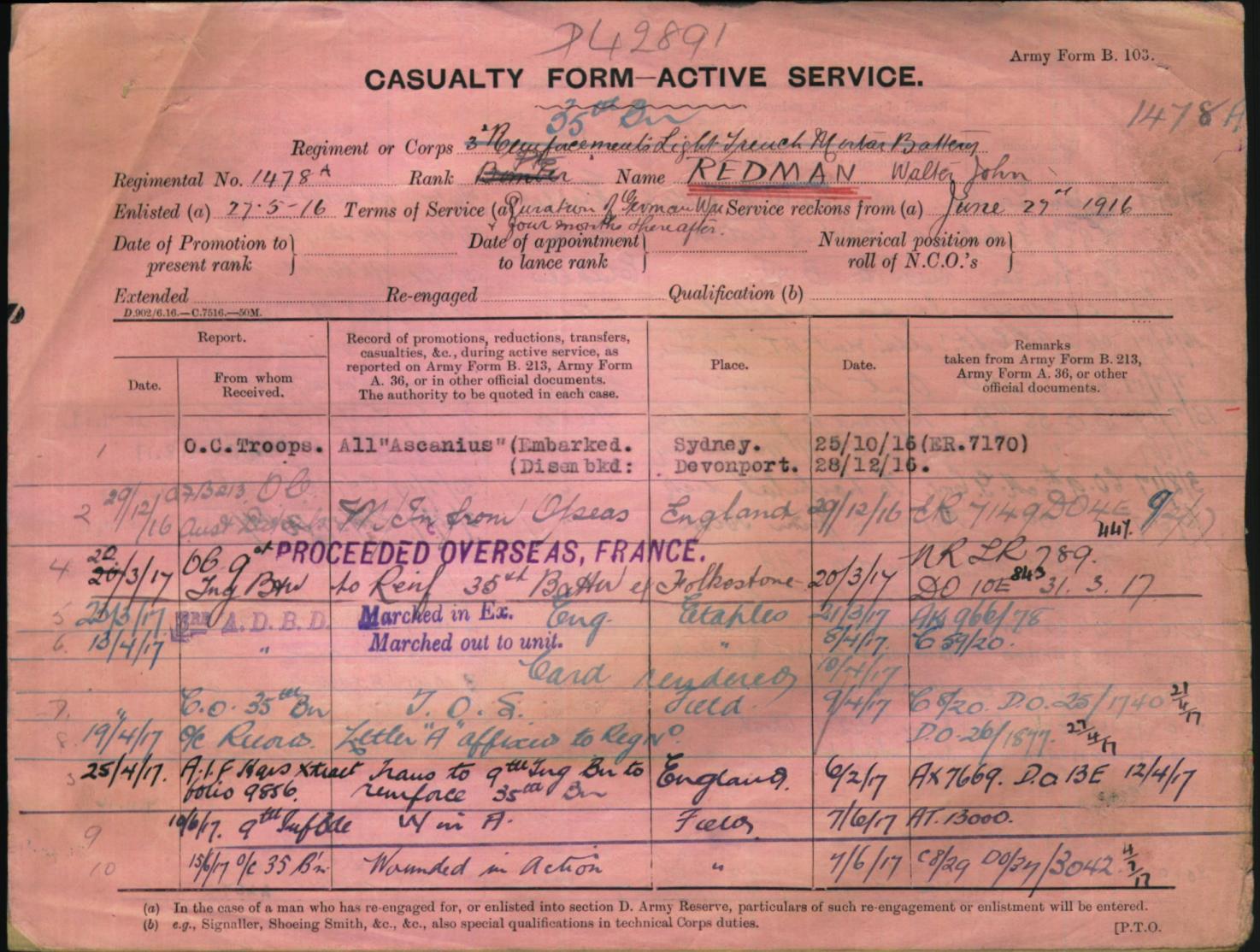

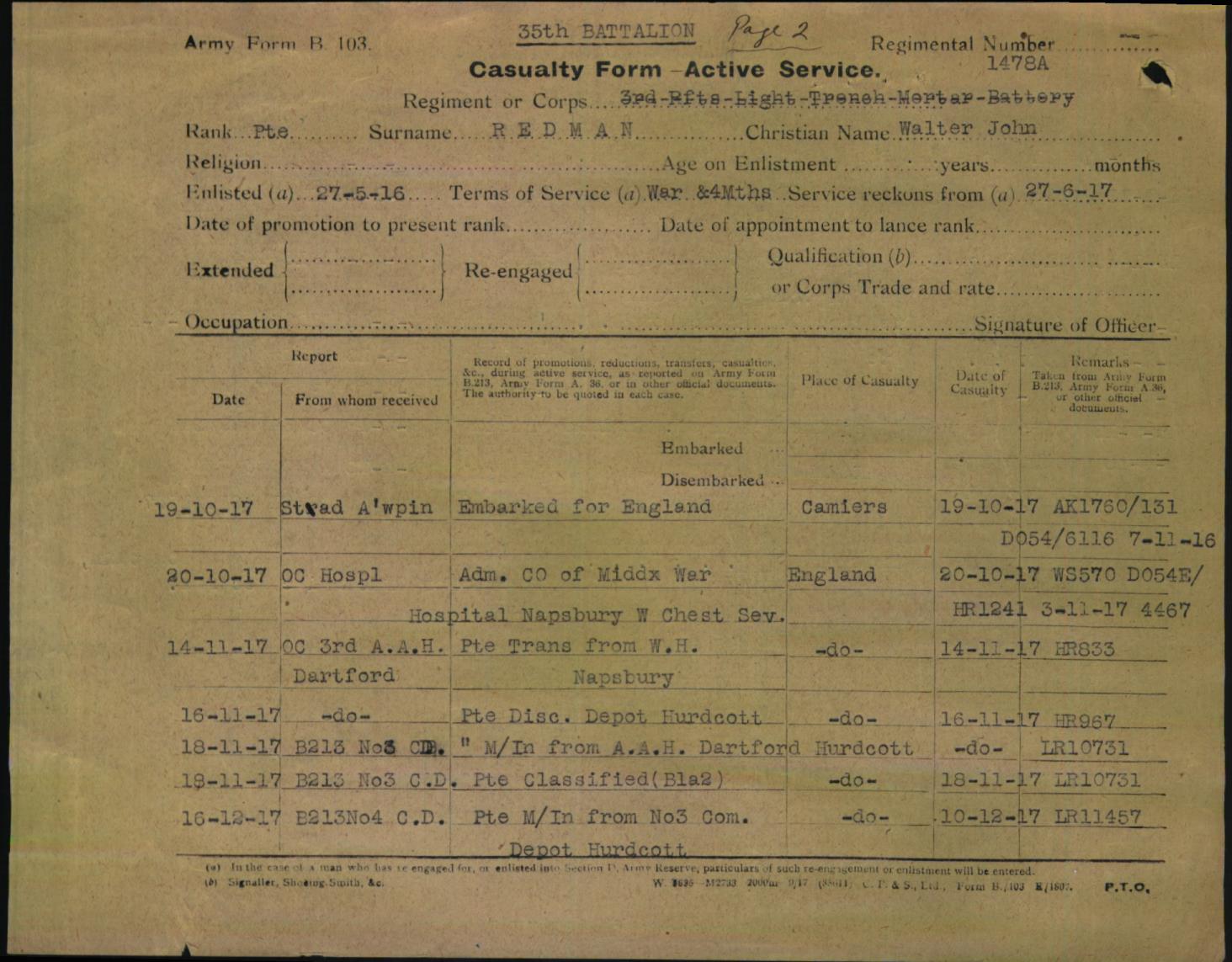
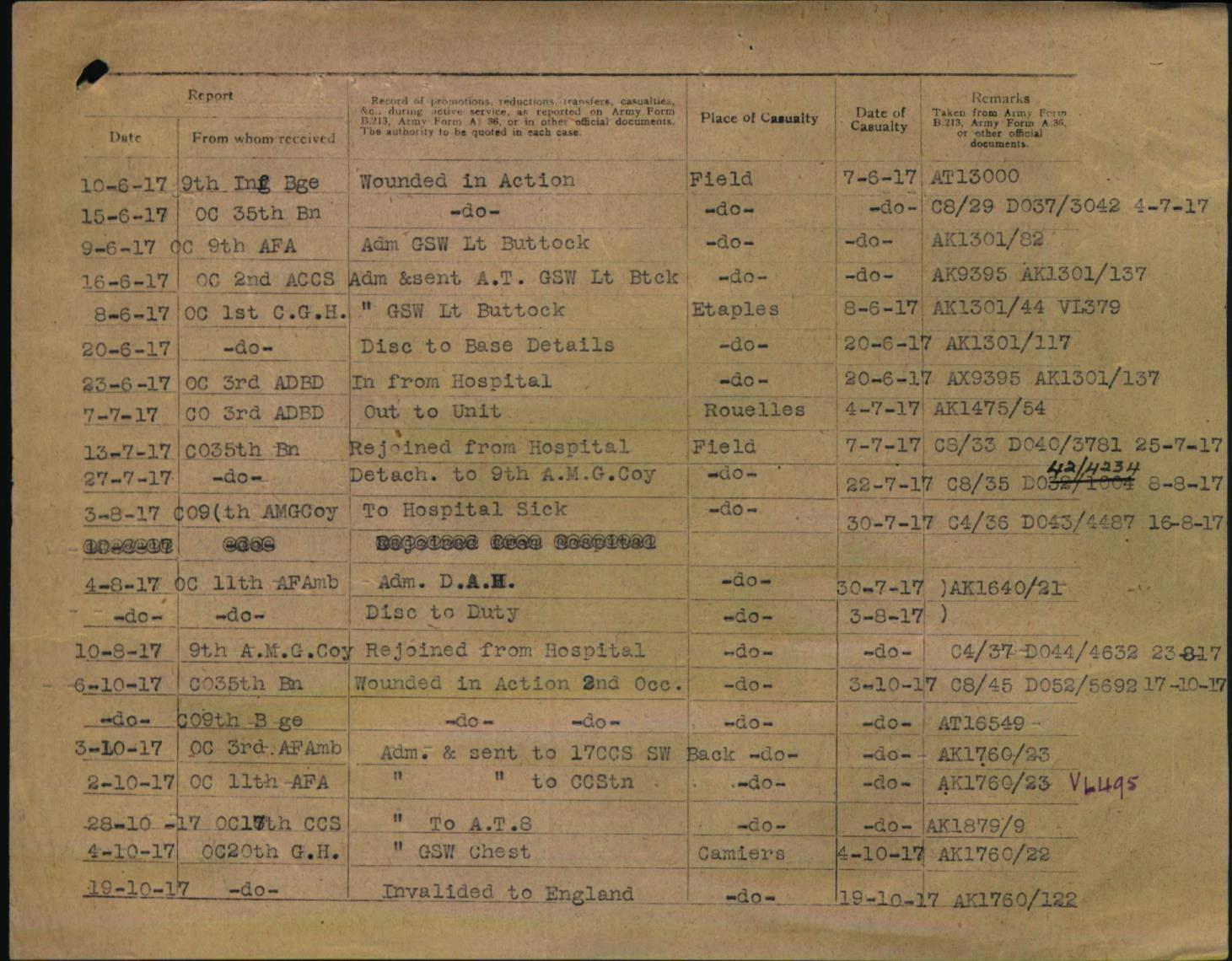
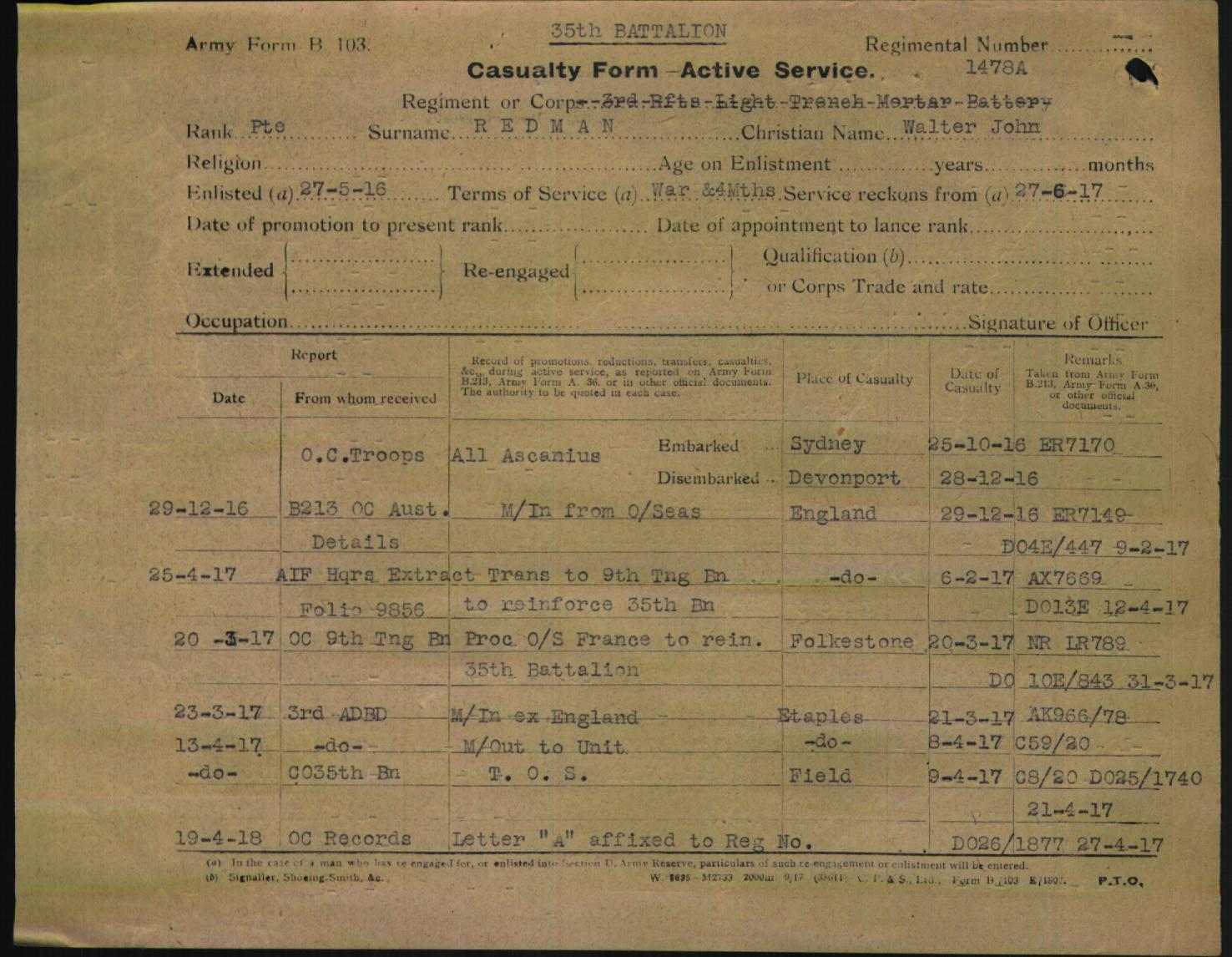


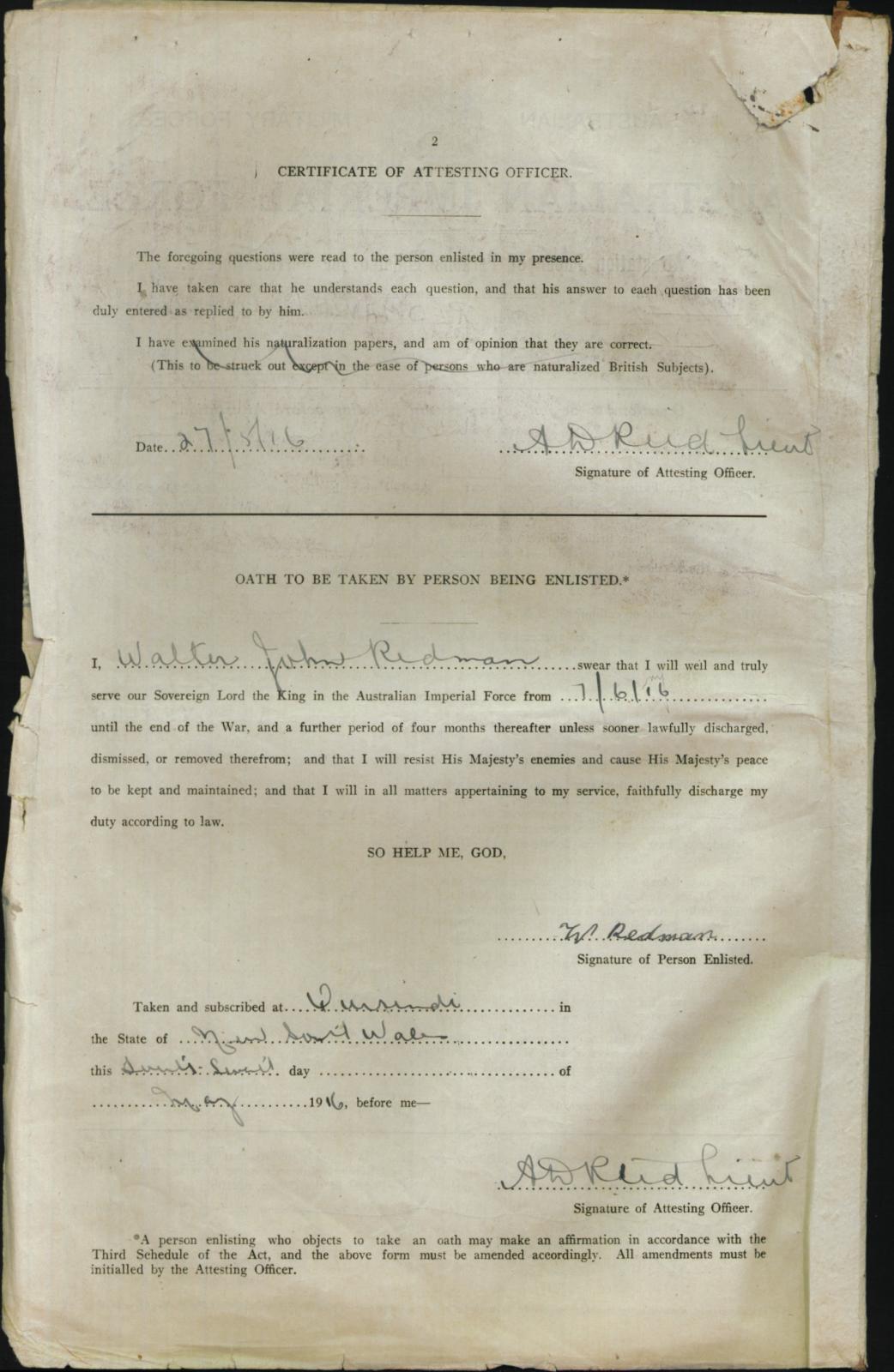
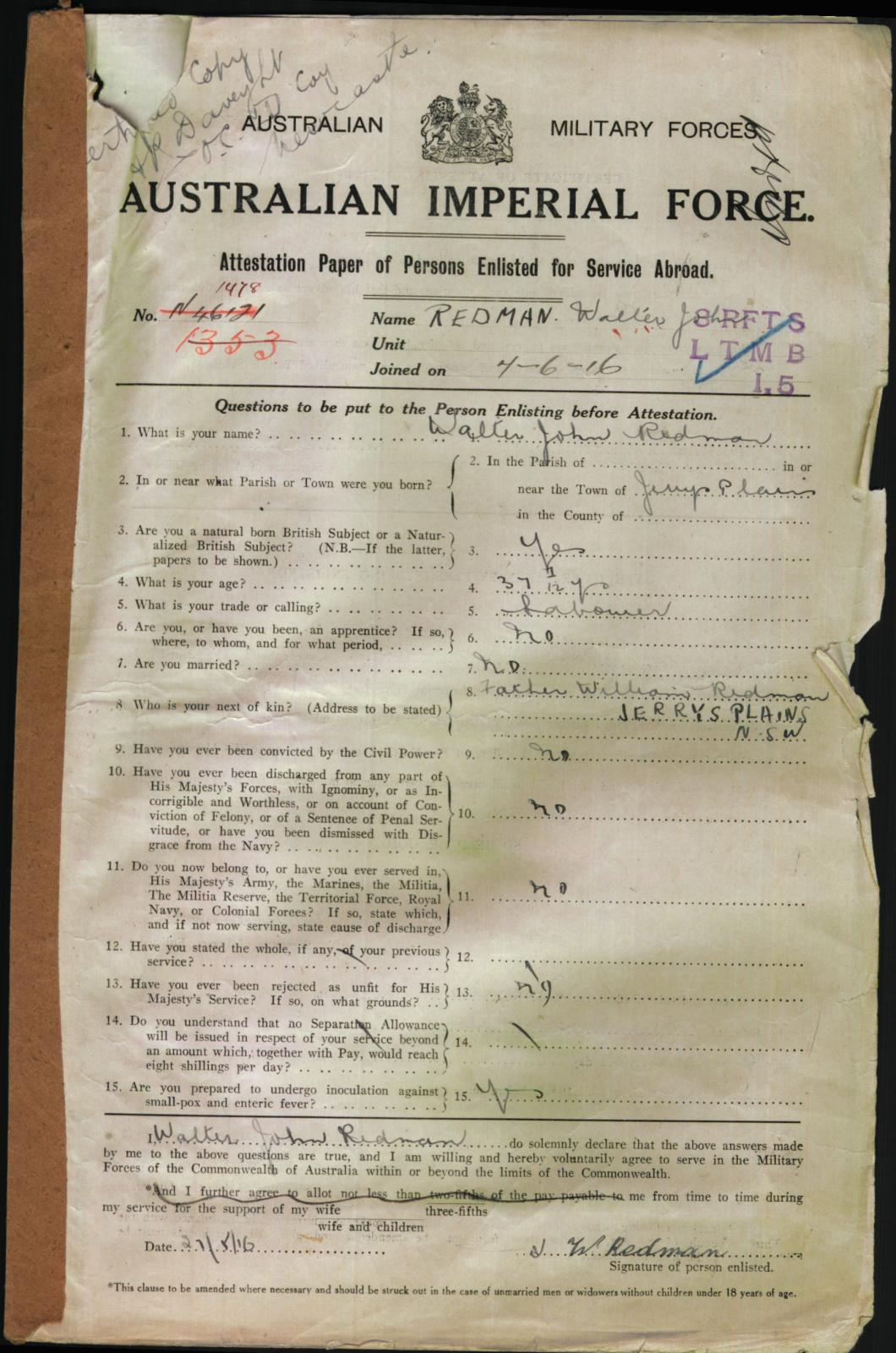
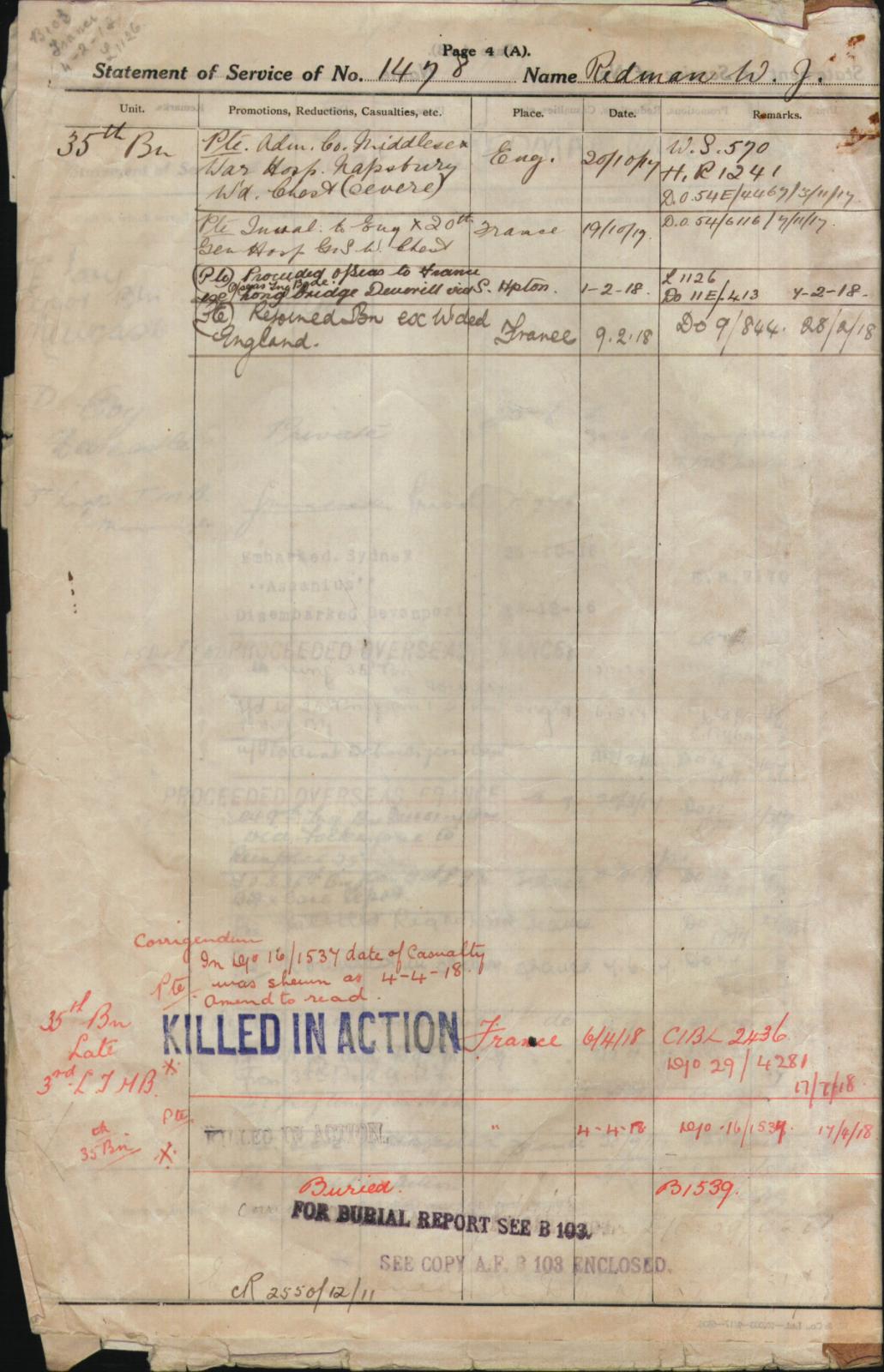
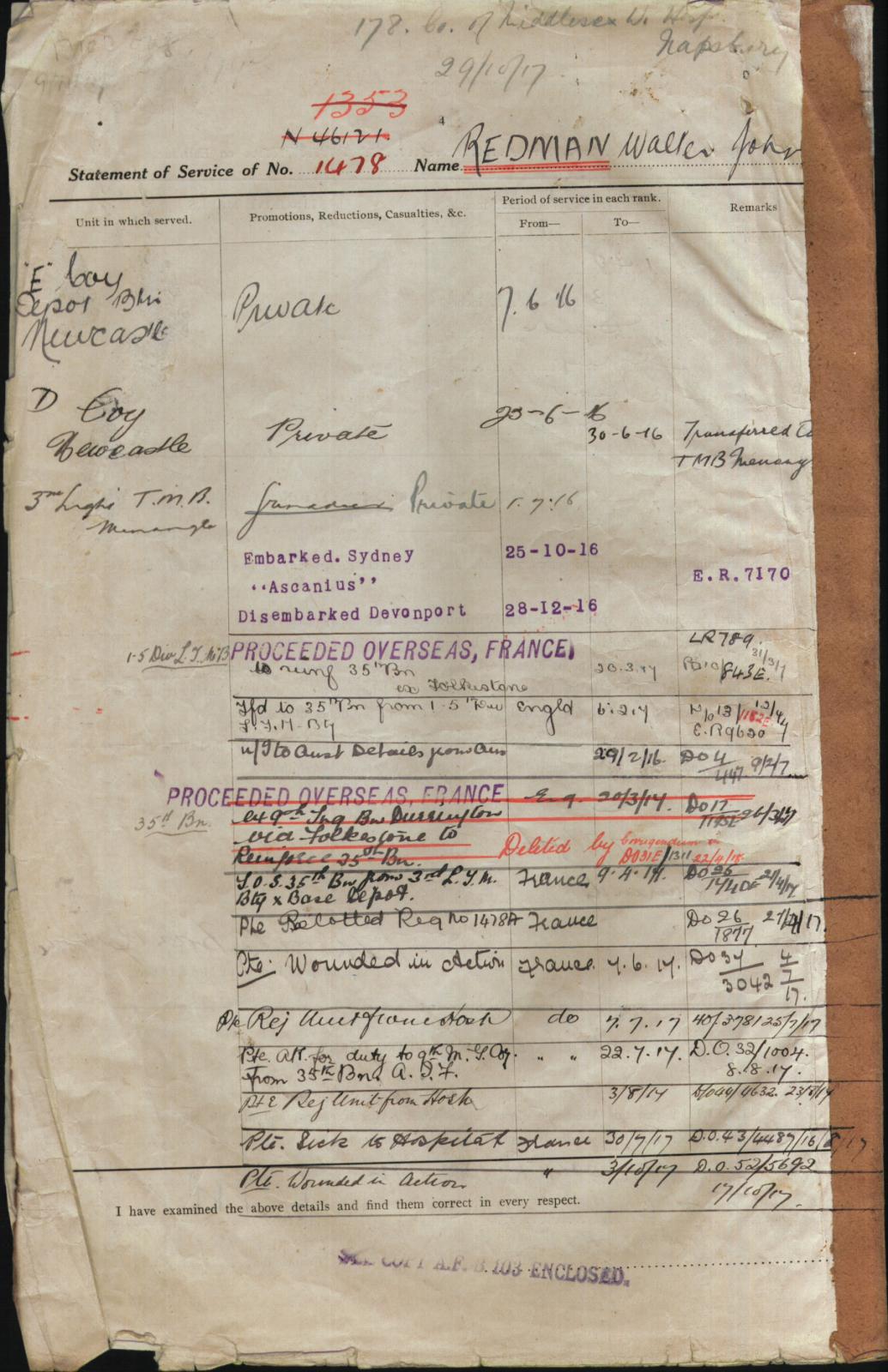
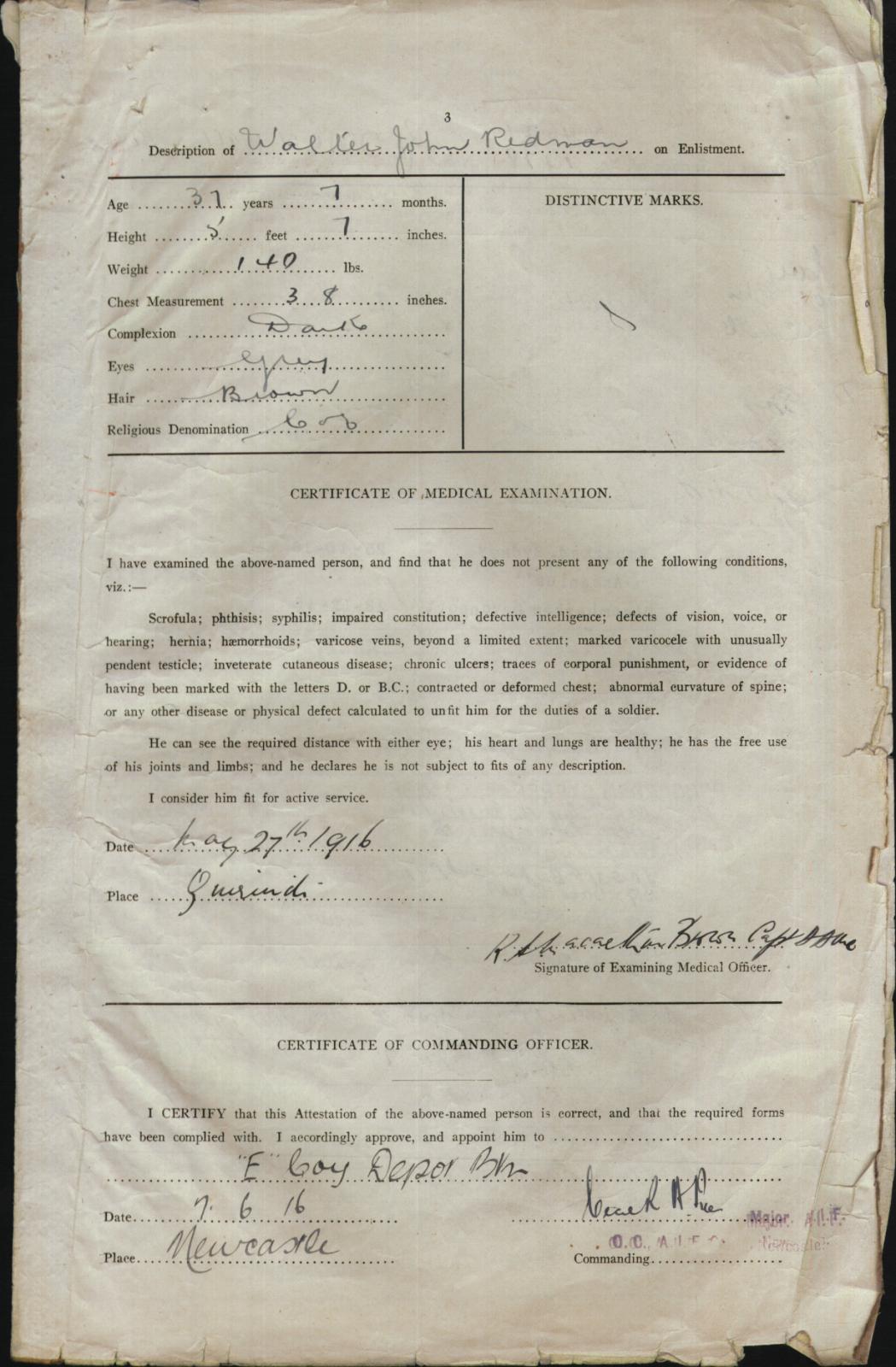
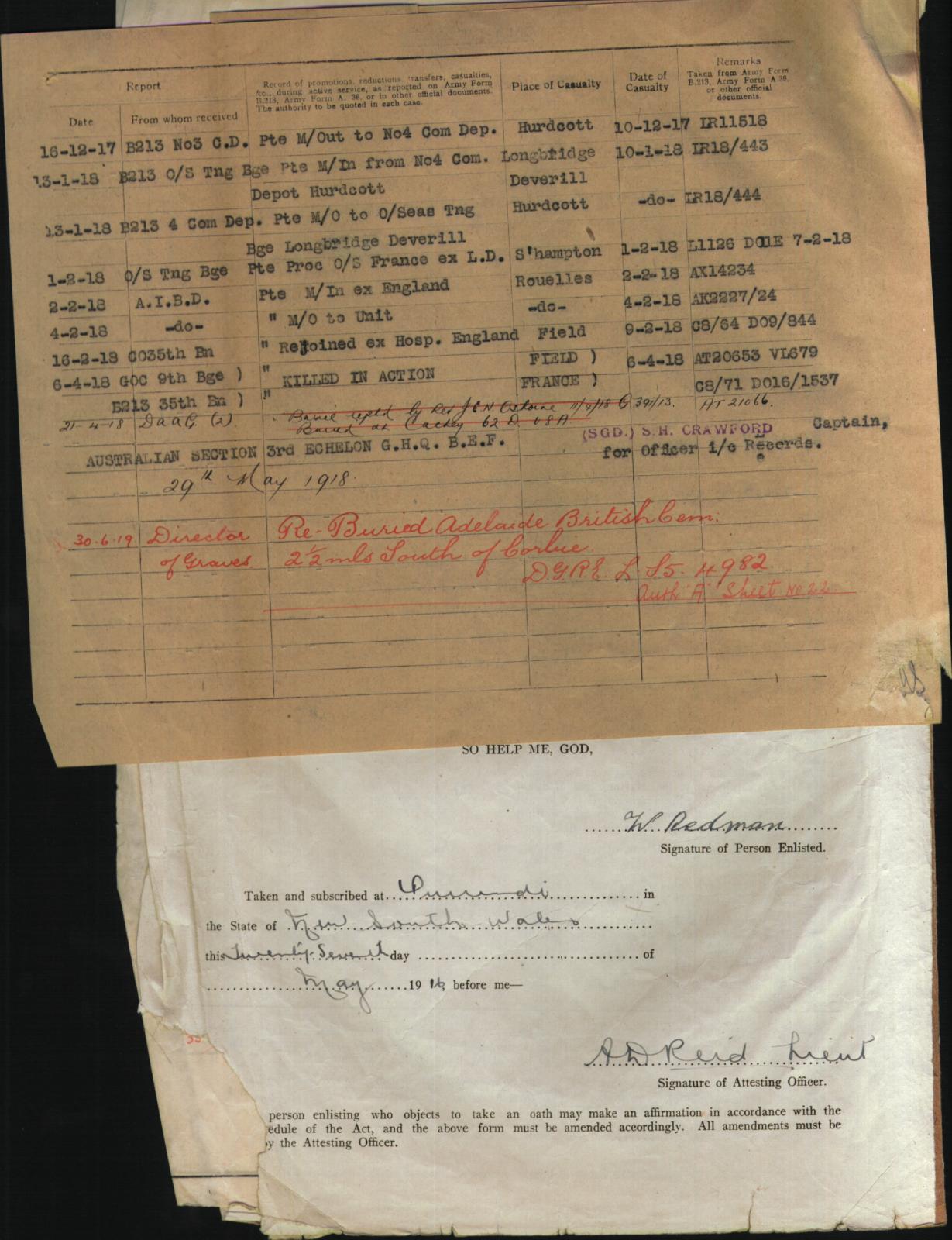
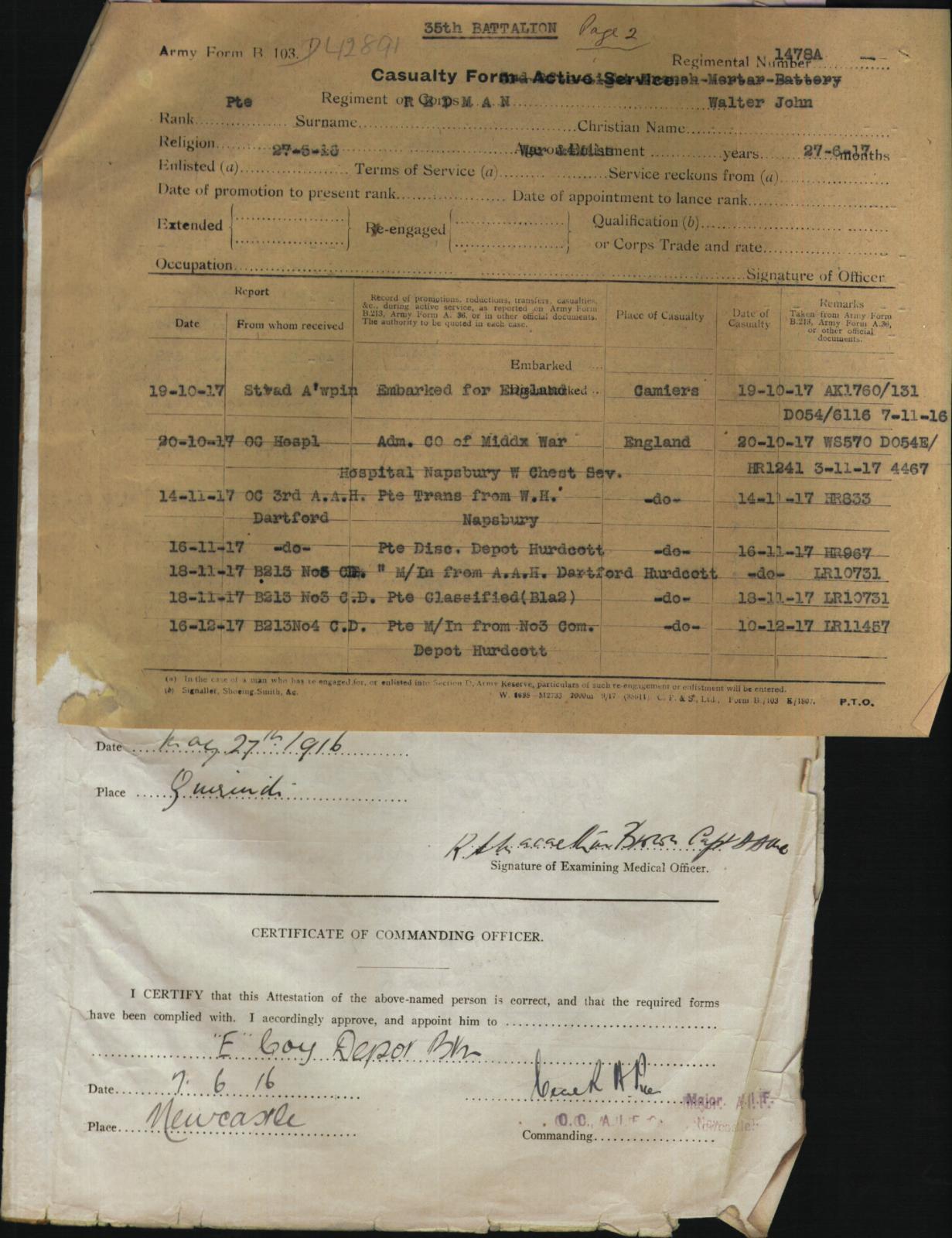

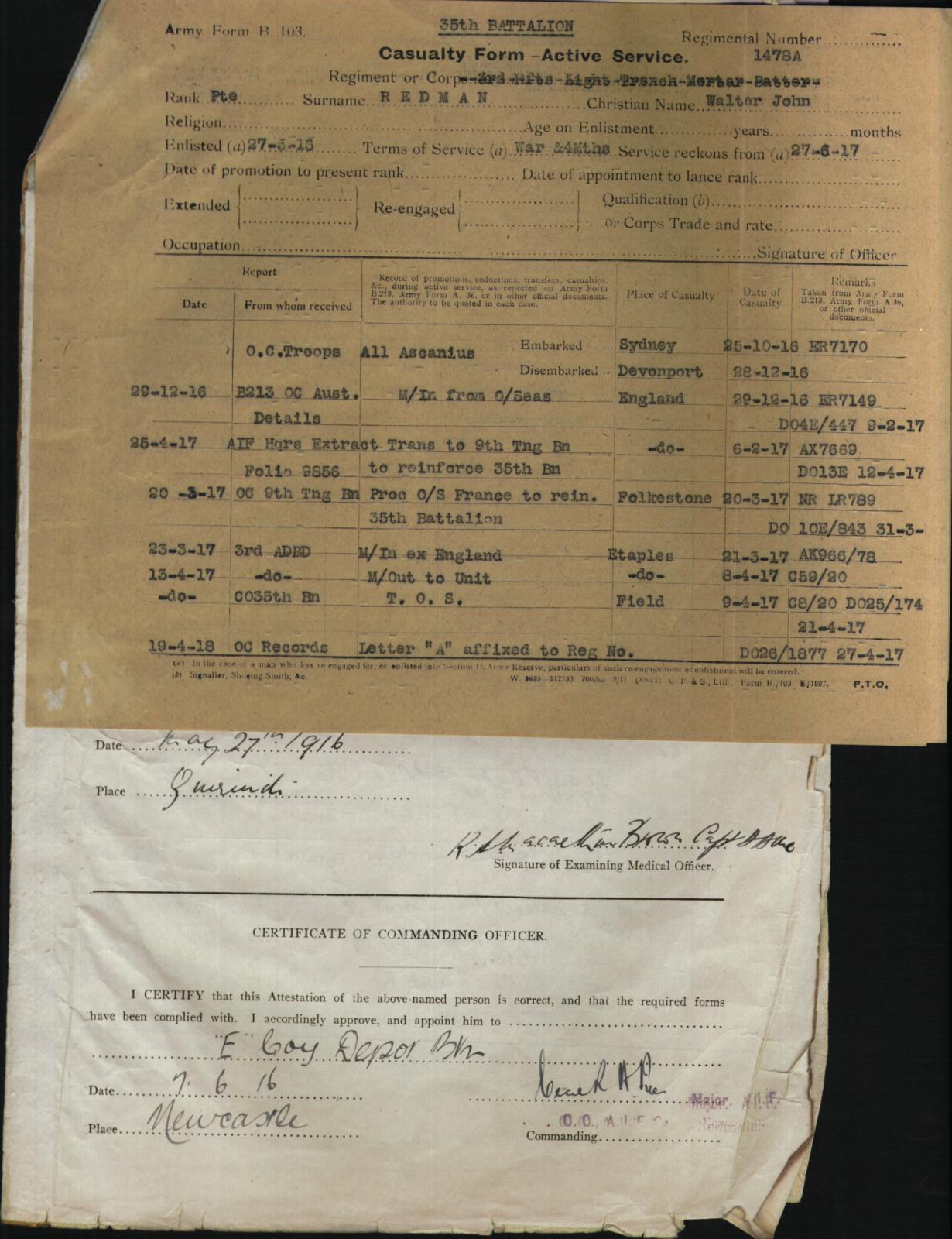

© Commonwealth of Australia (National Archives of Australia)
Under Construction:15/09/2018.
Under Construction: 15/09/2018.